Toward the end of each year, I survey the work R.K. Campbell, Roger Eckstine, Austin Miller, Robert Sadowski, David Tannahill, Tracey Taylor, John Taylor, and Ralph Winingham have done in Gun Tests, with an eye toward selecting guns, accessories, and ammunition the magazine’s testers have endorsed. From these evaluations I pick the best from a full year’s worth of tests and distill recommendations for readers, who often use them as shopping guides. These choices are a mixture of our original tests and other information I’ve compiled during the year. After we roll high-rated test products into long-term testing, I keep tabs on how those guns do, and if the firearms and accessories continue performing well, then I have confidence including them in this wrap-up.— Todd Woodard
SIG Sauer P226R Factory-Certified Pre-Owned 40 S&W, $725
GUN TESTS GRADE: A+ (BEST IN CLASS PISTOL)
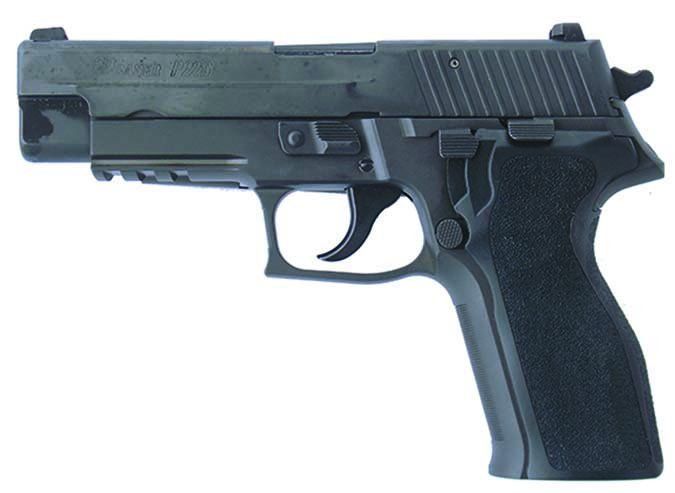
The pre-owned SIG P226R turned in as-new performance. Reliable and fast handling, the SIG got high marks during the firing tests. The pistol was ergonomic and fit most hands well. The double-action trigger was very smooth.
| ACTION | Double action semi-auto, locked breech |
| OVERALL LENGTH | 7.7 in. |
| OVERALL HEIGHT | 5.5 in. |
| MAX WIDTH | 1.5 in. |
| WEIGHT UNLOADED | 34 oz. |
| WEIGHT LOADED (12 rds.) | 42.4 oz. |
| BARREL LENGTH | 4.4 in. |
| BARREL | Blued steel |
| MAGAZINE | 12 Rds., blued steel |
| SLIDE | Steel |
| FRAME | Aluminum |
| FRAME FRONT STRAP HEIGHT | 2.5 in. |
| FRAME BACK STRAP HEIGHT | 3.4 in. |
| GRIPS | Plastic |
| GRIP THICKNESS (max) | 1.4 in. |
| GRIP CIRCUMFERENCE (max) | 5.6 in. |
| SIGHTS | Steel |
| TRIGGER PULL WEIGHT (DA) | 12 lbs. |
| TRIGGER PULL WEIGHT (SA) | 4.25 lbs. |
| TRIGGER SPAN (SA) | 2.4 in. |
| SAFETY | No manual safety |
| WARRANTY | 1 year |
| TELEPHONE | (603) 610-3000 |
| WEBSITE | SIGSauer.com |
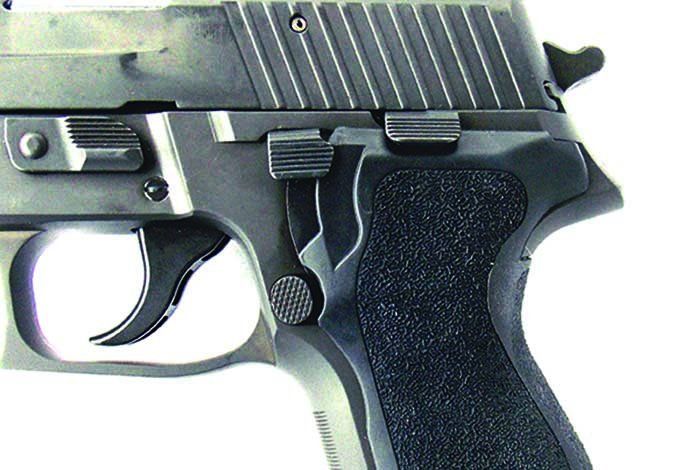
Our Factory Certified Pre-Owned SIG P226R 40 S&W, $725, came from South Carolina Gun Company. This was a police service pistol that has been refurbished. The pistol was delivered in a red cardboard box to distinguish it as a factory refurbished item. Still, the pistol appeared as new. The fit, finish, and quality control on the SIG left little more to be desired. Savings were $225 compared to the common $950 counter price of a new P226 with a rail and regular sights. Like two other test pistols, this one featured a rail, thus the “R” designation in the model number (which has been dropped from currently manufactured guns).
The SIG is a double-action first-shot pistol like the Beretta, but it featured no manual safety. The decocker was very ergonomic, located between the trigger guard and the grip frame. The trigger action was the smoothest double-action first-shot pistol tested, with a break at about 12 pounds. The single-action trigger broke at 4.25 pounds. Reset was much faster than other SIGs we have tested.
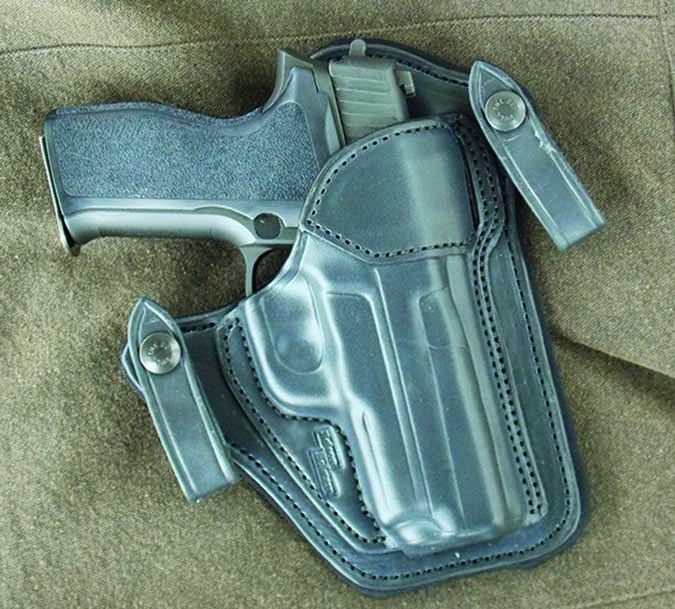
The sights were good examples of combat sights, with the typical SIG white outline treatment. The grip frame fit most hands well. The bore axis sat higher in the hand than the CZ or Ruger, and similar to the Beretta 96, and recoil moved straight back down the shooter’s arm. Handfit was comparable to the Beretta, but not quite on the par with the CZ.
The pistol was fast on target, and the smooth trigger action aided in landing a fast and accurate first shot. Control in rapid fire was comparable to the Beretta and better than the Ruger overall, but the heavier CZ was more controllable and did a better job in rapid fire. Still, in firing double taps and in rapidly engaging targets, the SIG did well. The vote was close.
In the benchrest firing session, it had a clear-cut edge over the other handguns. The refurbished SIG was most accurate with the three loads tested, averaging less than 2 inches for five shots in most of the testing. The Black Hills Ammunition 180-grain JHP exhibited a brilliant 1.4-inch group on one occasion, while the average was 1.9 inches.
Our Team Said: Based on its accuracy, reliability, relatively light weight, firing comfort, and a very fair price, the Factory Certified Pre-Owned SIG P226R earned an A+ rating from our test team.
Charter Arms Off Duty 53811 38 Special, $404
GUN TESTS GRADE: A- (BEST IN CLASS REVOLVER)
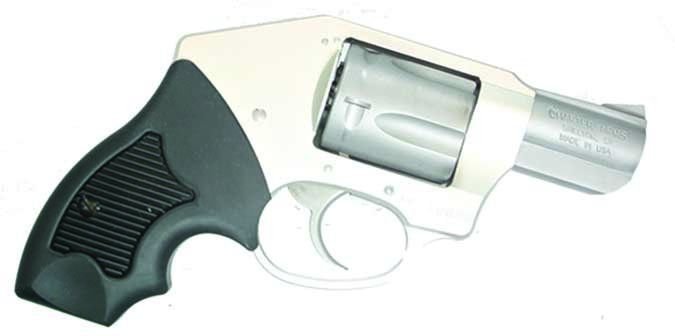
The Off Duty started off with a gritty trigger but soon slicked up; it was the lightest and most compact in this test.
| ACTION TYPE | Double action only |
| OVERALL LENGTH | 6.25 in. |
| BARREL LENGTH | 2 in. |
| SIGHT RADIUS | 3.8 in. |
| OVERALL HEIGHT | 4.9 in. |
| MAX WIDTH | 1.3 in. |
| WEIGHT UNLOADED | 12 oz. |
| WEIGHT LOADED | 16.1 oz. |
| CYLINDER GAP | .006 in. |
| CAPACITY | 5 |
| FRAME FINISH | Matte aluminum |
| BARREL/CYLINDER FINISH | Matte stainless |
| FRAME FRONT STRAP HEIGHT | 1.6 in. |
| FRAME BACK STRAP HEIGHT | 3 in. |
| GRIP | Ribbed rubber; finger grooves |
| GRIP THICKNESS (max) | 1.2 in. |
| GRIP CIRCUMFERENCE (max) | 5 in. |
| FRONT SIGHT | Ramped blade |
| REAR SIGHT | Top groove |
| TRIGGER PULL WEIGHT (DA) | 12 lbs. |
| SAFETY | Internal transfer bar |
| WARRANTY | Limited lifetime |
| TELEPHONE | (203) 922-1652 |
| WEBSITE | CharterFirearms.com |
| MADE IN | USA |
The Charter Arms Off Duty 5381 38 Special, $404, had a hammerless design, meaning the hammer was enclosed within the frame, making the Off Duty smooth and snag free. The frame is made of aluminum and left in a matte finish. The barrel, crane, and cylinder are made of stainless steel with a complementary matte finish. As a result, the gun had a subtle two-tone look that some testers liked.
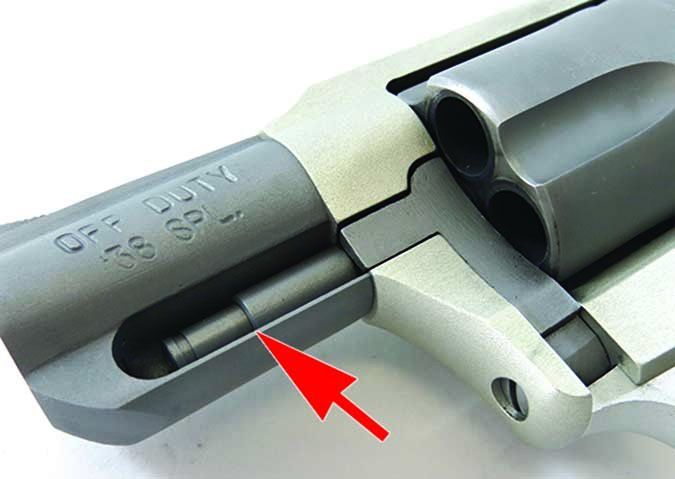
The black rubber grip was minimalist, with finger grooves that positioned our hand in a high, comfortable spot. The sides of the grips also had a slight palm swell and were ribbed for a better grasp. In addition, the grips filled that space behind the trigger guard that the RIA left vacant. In fact, our grip hold was the highest on the Charter Arms, which helped control muzzle flip and perform a fast second shot. We did note that the rubber grip fit to the backstrap overlapped. Not the best fit by any means. We would remove the extra rubber that overlaps the rear back strap. When shooting the Off Duty, we needed to curl the small finger under the grip.
The Charter’s cylinder lock up was the tightest of all three with no wiggle, which gave us more confidence in the design. The Off Duty locks the cylinder in the front and rear. The Charter Arms uses the ejector rod, which is nested and in two pieces that telescope to snap back into the frame. The cylinder latch was well serrated and large. It is pushed forward to swing out the five-shot cylinder. Both the grips and latch are speedloader friendly. The front edge of the cylinder had a slight chamfer, which aided reholstering.
The Off Duty revolver employs a one-piece frame, which makes the small revolver strong while allowing it to be slightly smaller than two-piece designs.
The 2-inch barrel used a full lug that enclosed the ejector rod. The lug was tapered so reholstering was easier. The ramp front sight was milled into the top of the barrel and serrated to minimize glare. The rear sight was a groove along the top. It was also notched so the aluminum rear sight contrasted nicely with the stainless front sight. These were the best sights, in our opinion. Out of the box, the trigger was gritty, but it soon smoothed out with dry-fire practice and range testing. The trigger was serrated in the middle, allowing users to keep the position of their trigger finger the same, even during recoil.
Due to the compact size and light weight of the Off Duty, recoil was most noticeable, whacking the web of our hand at the top position of the grip. The rear of the rubber grips were squared off, and we also felt those edges slap our palms. If the rear edges of the grips were rounded, we believe felt recoil would be less.
We felt 2.0 inches for five shots was acceptable for a close-in defense weapon. We were able to coax it to under an inch with the Federal ammo, and our smallest groups with the Armscor and Hornady ammos hovered around 1.5 inches. The smallish grip and stacking on the last bit of trigger press no doubt hindered accuracy. Empty cases ejected smartly out of the Charter Arms, as they did with the other two.
In concealed carry, the Off Duty shined. It could be carried in a holster designed for a S&W J-frame or dropped in a pants or cargo-pants pocket.
Our Team Said: The Off Duty was the lightest and most compact revolver tested. The trigger was initially gritty, but it smoothed out after use. We would not hesitate to carry this revolver.
Savage Arms Model 12 Long Range Precision (LRP) 19137 6.5 Creedmoor, $1252
GUN TESTS GRADE: A (BEST IN CLASS RIFLE)

The Model 12 LRP shot the smallest groups of the test with every round we tried.
| ACTION TYPE | Bolt, 2 lugs |
| OVERALL LENGTH | 46.25 in. |
| BARREL | 26 in.; 1:8 twist; matte blued finish |
| OVERALL HEIGHT (w/o scope) | 6.5 in. |
| WEIGHT UNLOADED | 11.1 lbs. |
| WEIGHT LOADED (140 gr.) | 11.4 lbs. |
| ACTION FINISH | Matte blued |
| MAGAZINE | 3 rds.; removable, flush fit box |
| STOCK | HS Precision fiberglass w/ aluminum bedding block |
| STOCK LENGTH OF PULL | 13.5 in. |
| TRIGGER PULL WEIGHT | 2.1 lbs. |
| SAFETY | 3 position, Tang |
| WARRANTY | 1 year |
| TELEPHONE | (800) 370-0708 |
| WEBSITE | SavageArms.com |
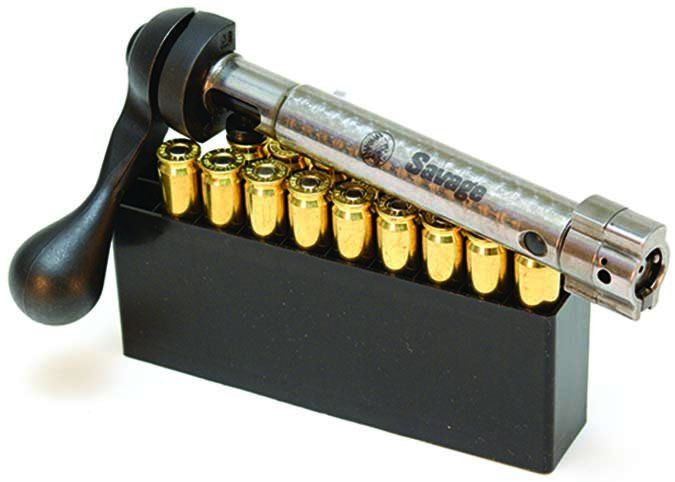
Based on the accuracy and simplicity of the Savage Arms Model 12 Long Range Precision (LRP) 19137 6.5 Creedmoor, $1252, the specially bedded fiberglass stock is still the heavyweight champion, even if this platform is under attack from the chassis designs. The HS Precision Pro Series Tactical (PST) stock on the Savage grabs your attention, as do the LRP’s 1-inch-diameter 26-inch-long fluted carbon-steel barrel, oversized bolt handle, and scrolled and polished chrome bolt.
Our test rifle model, No. 19137, was so new at the time of this writing that the manufacturer had not yet assigned a photograph to its web link. But it does resemble the $3695 HS Precision PLR custom rifle, though our test rifle offered a more vertical grip and the barrel of our LRP showed decidedly less taper. The heft of the barrel walls made the 6.5mm bore look relatively tiny, with the result being a rifle that was heavy but with a balance point very near the center of its 46-inch-plus overall length.
The Model 12 fed from a detachable magazine. We liked that it fit flush to the receiver, but magazine capacity was limited to only three rounds. Formed from sheet metal, the magazine’s construction was robust. While feeding and working the action, we found it to be smooth and reliable, but also a bit heavy, in our view. The words, “Warning: Precision Target Trigger” were emblazoned on the left side of the action, and, yes, this was indeed a special iteration of Savage’s Accu-Trigger. The center activation lever was also colored red to remind the shooter to pay extra attention. Our Savage LRP had the lightest-weight trigger in our test, coming in at about 2.25 pounds with little variation. The trigger sensation was very easy to learn, and it did not ask the shooter to overcome a sharp break or wait through a lengthy compression.
The tang-mounted safety offered a third central position so the bolt could be worked with the trigger locked down. We found ourselves more willing to use the safety on this rifle (rather than just leave the bolt open) because the stock was so comfortable in the hand. Both sides of the vertical pistol grip offered the same natural palm swell, leaving the thumb for either left-handed or right-handed shooters resting atop the safety. So far, index to the trigger was about perfect for everyone who has shot the LRP.
Some of our smaller shooters thought the buttstock felt a little long, but length of pull measured only about 13.5 inches. We think its length was somewhat of an illusion caused by the supplied two-piece scope base. With only one cross slot fore and aft of the ejection port, adjustment for eye relief was limited to sliding the scope back and forth within the rings.
In testing the Howa and Ruger rifles, we saw a distinct preference for the A-Max Match loads and much less willingness for those rifles to deliver the 129-grain SST Superformance hunting loads into a tight group. Before shooting the Savage, we credited this to the Superformance ammunition being designed more for terminal ballistics than match-grade accuracy. But the Savage was ready to pile at least one shot on top of another in every group, including those shot with the Superformance. In addition, both A-Max rounds produced some sub-half-inch groups. The Howa and Ruger rifles each favored the Hornady 140-grain A-Max ammunition with an average-sized group of about 0.6 inches. The Savage tied this performance and delivered 5-shot groups averaging 0.6 inches and 0.5 inches across for the 129-grain and 120-grain ammunition, respectively.
Our Team Said: Our wish list for the newest Savage Arms model 12 LRP was very short: A one-piece scope base, a second sling stud beneath the forend, and maybe an adjustable cheekpiece. In the meantime, buyers of this rifle are going to be bored shooting at less than 300 or 400 yards. If longer-range competitive shooting interests you, this rifle is probably the simplest and least expensive way to get started.
Browning Citori Model 725 Field No. 0135303004 12 Gauge, $2470
GUN TESTS GRADE: A (BEST IN CLASS SHOTGUN)

This is another in a long line of solid, fine-handling over-and-unders. This new field model patterned well, broke targets well, and looked good while doing its job.
| ACTION TYPE | Over/under |
| CHAMBER SIZE | 3 in. |
| OVERALL LENGTH | 44.75 in. |
| CAPACITY | 2 |
| WEIGHT UNLOADED | 7.75 lbs. |
| BARREL LENGTH | 28 in. |
| BARREL | Polished blued steel, chrome lined |
| RECEIVER | Low profile silver nitride w/ roll engraving |
| SAFETY | Non-automatic |
| CHOKE TUBES | Invector DS flush-fit (IC, M, F) |
| BUTTSTOCK | Grade II/III checkered walnut, gloss oil finish |
| LENGTH OF PULL | 14.25 in. |
| DROP AT COMB | 1.6 in. |
| DROP AT HEEL | 2.5 in. |
| FOREARM | Grade II/III checkered walnut, gloss oil finish |
| FRONT BEAD | Ivory |
| REAR BEAD | Ivory |
| RIB | 1/4 in. |
| TRIGGER PULL WEIGHT (BOTTOM) | 4.5 lbs. |
| TRIGGER PULL WEIGHT (TOP) | 4.25 lbs. |
| TRIGGER RESET | Mechanical |
| WARRANTY | Limited |
| TELEPHONE | (800) 333-3288 |
| WEBSITE | Browning.com |
| MADE IN/ASSEMBLED IN | Japan |
The Browning Citori Model 725 Field 0135303004 12 Gauge Over/Under, $2,470, is the latest version of a long line of Browning over-and-unders that have found favor with the shooting public. At first glance, there are only minor differences in the appearance between this field model and its sporting-clays cousin introduced about five years ago. The new model features a rounded forearm designed with a slight palm rest, high-relief engraving on the receiver, and ivory front and mid-bead sights.
Internally, the Browning has a mechanical trigger system, back-bored barrels with lengthened forcing cones, and the Invector-DS internal choke tube system, with Improved Cylinder, Modified, and Full tubes included with the Field model, the same features introduced when the original Model 725 hit the market.
This field shotgun provided a solid, well-balanced platform for handling clays and birds, as expected. It tipped the scales at 7.75 pounds and measured 44.75 inches in length, with our team finding no fault in its heft or handling ability.
The shotgun’s length of pull was 14.25 inches, with a drop at the comb of 1 5⁄8 inches and a drop at the heel of 2.5 inches. These dimensions are right on the average mark for an out-of-the-box shotgun, and our team members had no problems adjusting.
We liked the feel and looks of the checkering on both the pistol grip and the newly designed forearm. Our shooters documented no handling problems in any of our testing.
With birds in the air, we should note we were particularly impressed with the trigger-pull touch-offs of 4.5 pounds for the bottom barrel and 4.25 for the top barrel. The Fire-Lite mechanical triggers in the Model 725 are both smooth and crisp, going the extra step to help a shooter stay on target when touching off a shot.
Our trip to the patterning board before field testing on the clay target range with the Browning was an eye-opener. We have patterned several Browning shotguns featuring the Invector DS (Double Seal) chokes and found the tubes seem to pattern very well. This Model 725 Field was no exception. Firing the Winchester Extra-Lite No. 71⁄2 shot shells at a range of 30 yards, we found the Modified choke in the top barrel produced a 57-43 percent pattern (57 percent above the center and 43 percent below) and the Improved Cylinder choke in the bottom barrel produced a 62-38 percent pattern. Shooting just a little high is exactly what a field shotgun should do to handle rising targets.
We were particularly impressed with the pattern spread, finding a very solid and uniform distribution of hits. Both the Modified and Improved Cylinder tubes delivered just under 40 percent of the strikes within a 20-inch circle around the center of the targets. There were 202 hits in the 20-inch circle with the Modified choke and 164 hits with the IC choke.
This solid, uniform patterning performance with no holes that might allow a clay or bird to escape undamaged was verified on the clay-target range. We smacked most targets with authority. A ragged pattern that might only cause a chip to fly off a clay target is acceptable on the range, but a crippling shot on a bird in the field because of ineffective pellet trauma is not. We found the Browning hit targets hard when the shooter puts the pattern in the right place at the right time. Recoil with the Browning using the two light loads was well within the comfortable range, and spent shells were ejected with authority each and every time — there were no malfunctions of any kind.
Our Team Said: This shotgun, whose predecessors date back more than 40 years, is a true tribute to the solid, reliable, high-quality Browning over-and-unders on the market today. It handled very well on the clay-target course, excelled on the patterning board, and helps a shooter look sharp to his compatriots while serving as a solid shooting tool.
Uberti Model 1860 Henry 342880 45 LC, $1429
GUN TESTS GRADE: A

We were pleased with all aspects of this Italian-made rifle. It was done entirely right, we thought. It shot well, everything worked, and it looked like it ought to look.
| OVERALL LENGTH | 43.9 in. |
| BARREL LENGTH | 24.3 in. |
| SIGHT RADIUS | 21.6 in. |
| OVERALL HEIGHT | 8 in. |
| LENGTH OF PULL | 13.3 in. |
| WEIGHT UNLOADED | 9.2 lbs. |
| WEIGHT LOADED | 9.9 lbs. |
| MAGAZINE CAPACITY | 13 |
| ACTION FINISH | Brass |
| ACTION TYPE | Lever |
| BARREL FINISH | Blued |
| MAGAZINE TYPE | Tubular, integral |
| STOCK | Walnut |
| TRIGGER PULL WEIGHT | 6.2 lbs. |
| WARRANTY | 5 year limited |
| TELEPHONE | (301) 283-6981 |
| WEBSITE | Uberti.com |
| MADE IN | Italy |

Uberti makes five versions of the Uberti 1860 Henry Rifle 342880 45 Colt. The Trapper 342910 in 45 Colt has an 18.5-inch barrel, a brass frame and buttplate, and a case-hardened lever. The Rifle models have similar cosmetics to the Trapper but have 24.5-inch barrels, one chambered in 44-40 (342390) and our test gun in 45 Colt. Two more Rifle models come in the same chamberings (342370 in 44-40 and 342360 in 45 Colt) and have the same barrel lengths as the brass ones, but they display case-hardened frames and levers and blued buttplates and list for $30 more.
Our first glance at the Uberti test model was extremely satisfying. We found the barrel flats to be properly done. The edges between them were sharp enough and, sighting along the flats, we found them to be dead level. The bluing was authentic looking. It was not rust bluing, but looked close enough to it to satisfy us. Our impression was that this is how the 1860 Henry is supposed to look. While the action was not quite so glossy as the Henry version, it still reflected much like a mirror and was, like the barrel flats, dead flat. The walnut stock had some lovely tiger-striping in it that our photos might not pick up, and inletting was excellent. While the stock finish was mighty hard, it had none of the milkiness that Henry’s rifle had.
The little button behind the loading lever had distinct stops every 90 degrees, a feature was missing from the previously tested version. The sights were identical to those found on the Henry Henry, the rear having all the same little cuts, holes, notch contours, elevation slide and markings as on the other rifle. The front sight was also identical in contour to the other rifle, and had a flat-topped blade insert of somewhat shiny metal. The hammer was blued, but the loading lever was case hardened. We believe the original Henry rifles (from the 19th century) had blued parts, but there were some finish variations in the 1866 and 1873 rifles that followed it, so we believe it’s possible some of the original Henrys had case-hardened parts. If that’s not true and the dull case coloring offends you, rub the parts with cold blue and call it good. We don’t think that’s necessary, however — it looked mighty nice.
The rifle had the caliber marked just behind the rear sight on top of the barrel as “45 COLT.” The left side of the barrel had the importer’s name and Uberti’s name tastefully small. Behind that were two Italian proof marks. On the top of the barrel, an inch in front of the rear sight, was “PATENT. OCT. 16. 1860.” The top tang of the action held the designation “MOD. 1860 HENRY” and the bottom tang held “A. UBERTI – ITALY” and the serial number. The action proof marks were under the action just behind the loading platform. There were no other markings on the rifle.
We found all the controls to be smooth, including the “loading” gate at the front of the rifle. We did note the edges of just about everything — the front gate system, the edges of the magazine cut along the bottom of the rifle, etc. — were all sharp enough to cut the hands. A little wear from use will fix that, or these could be deburred carefully by the owner. We can’t knock the rifle for that, however, because it all looked clean and crisp with those sharp edges. Loading the rifle was easy, by which we mean the follower easily raised the front lock to let the gate swing open without any of the fiddling the Henry’s version needed. The magazine held 13 rounds, despite the manual saying it was 10.
Groups with the PMC averaged 2.3 inches at 50 yards off the bench. The front sight was slightly shiny, and we chose to blacken it to get a better sight picture in our late-fall light. We accomplished that with a Sharpie, and that helped our groups. To our joy, the rifle had a decent trigger pull, 6.2 pounds and free of creep.
Our Team Said: We thought the Uberti 1860 Henry was as good a rifle as any we’ve tested, modern or otherwise. We were extremely gratified to see a company making such a high-grade version of the old Henry, never mind where in the world it’s made. We’d buy this one instantly if we wanted a brass gun for fun.
Springfield Armory TRP PC9108LP 45 ACP, $1347
GUN TESTS GRADE: A
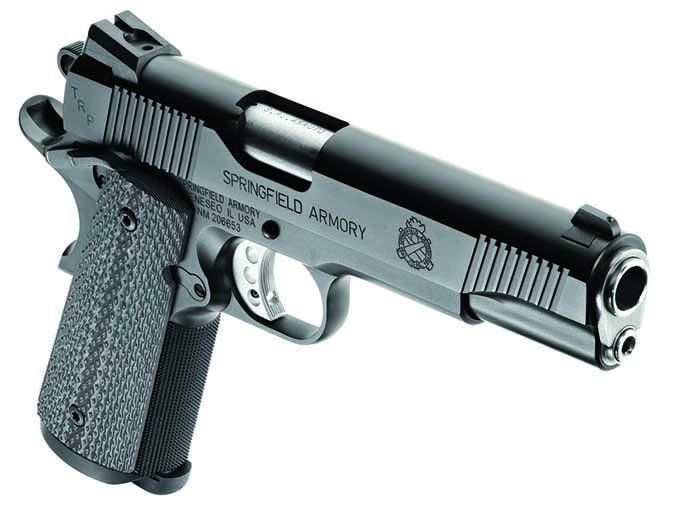
This is a first-class 1911. The Springfield offered excellent reliability, accuracy, and night sights, a big advantage. Excellent slide-to-barrel fit and frame-to-slide fitting.
| ACTION | Single action semi-auto, locked breech |
| OVERALL LENGTH | 8.5 in. |
| OVERALL HEIGHT | 5.7 in. |
| MAX WIDTH | 1.5 in. |
| WEIGHT UNLOADED | 42 oz. |
| WEIGHT LOADED | 45.5 oz. |
| SLIDE | Carbon steel, Black Armory Kote |
| FRAME | Carbon steel, Black Armory Kote |
| BARREL | 5 in. match grade stainless steel; 1:16 twist; full-length guide rod |
| MAGAZINE | (2) 7-rd. stainless steel w/ slam pads |
| FRAME FRONT STRAP HEIGHT | 2.6 in. |
| FRAME BACK STRAP HEIGHT | 3.2 in. |
| GRIPS | Black and gray G10 checkered |
| GRIP THICKNESS (max) | 1.3 in. |
| GRIP CIRCUMFERENCE (max) | 5.4 in. |
| SIGHTS | Low profile combat, 3-dot tritium |
| TRIGGER PULL WEIGHT SINGLE ACTION | 5.5 lbs. |
| TRIGGER SPAN SINGLE ACTION | 2.5 in. |
| SAFETY | Slide lock, grip |
| WARRANTY | Lifetime |
| TELEPHONE | (800) 680-6866 |
| WEBSITE | Springfield-Armory.com |
| MADE IN | Geneseo, Illinois. |
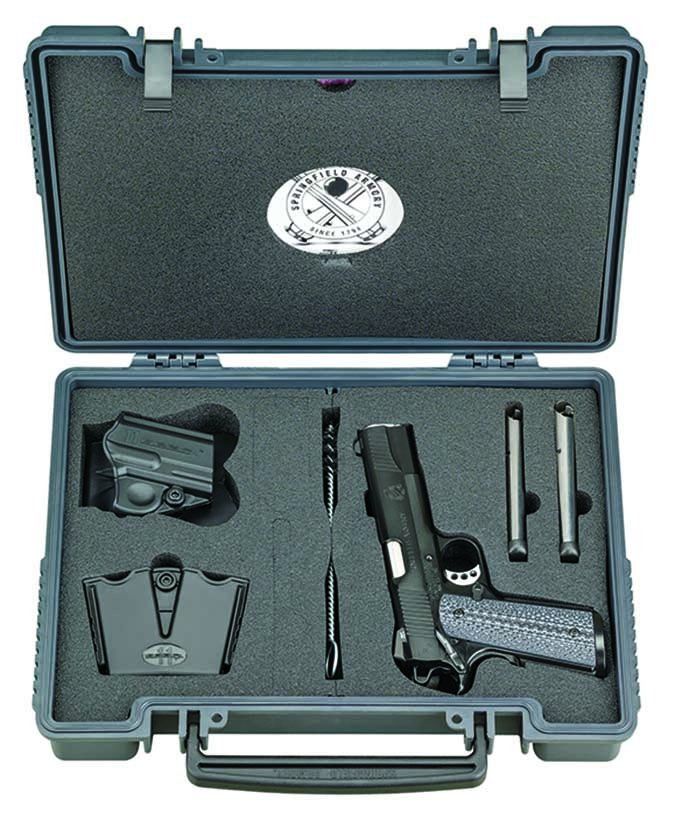
The Springfield TRP PC9108LP 45 ACP, $1347, was originally offered as an affordable version of the Professional Model. The fit and finish were noticeably superior to the Loaded Model, and to our eyes, it was on par with the much more expensive Professional Model. (Bud’s listed one for $2,345.)
The TRP pistol we tested was supplied with two magazines, a plastic range holster, and dual magazine carrier. The TRP uses a lightweight firing pin and heavy firing pin spring as a safeguard and does not incorporate a firing pin block into the action. When racking the slide of the TRP, we believe the fit was tighter than the Colt Combat Elite or Rail Gun and much tighter than the Loaded Model.
The Springfield TRP features a Teflon-based coating that proved durable during our testing and it was self lubricating. Still, we lubricated the pistol just the same as most users will. The fit of the slide to the frame was tight, with very little lateral play. The cocking serrations forward and rear are a bit longer than the Colts’. The Novak sights were identical, save the TRP featured self-luminous tritium inserts, which are a pricey and helpful upgrade. The full-length guide rod offered reasonably rapid disassembly by use of an Allen wrench compared to a two-piece guide rod that may be unscrewed by hand. We only report on what we observe, and the Springfield full-length guide rod did not loosen and was easy to field strip. The slide-lock safety was ambidextrous and gave the TRP another advantage. Fit and crispness of the slide lock safety and magazine release were each excellent. The trigger action was clean and broke at 5.5 pounds.
A big advantage was the TRP’s checkered front strap, which presented 20-lines-per-inch checkering that gave good adhesion when firing. Coupled with checkered G10 grips, most of our shooters liked how the gun felt during tactical firing. One of the female raters felt the checkering was too sharp for her palm. Our most experienced rater also found the abrasion to be a bit sharp and saw the checkering left an outline in his palm. To control the pistol in stressful times, with sweaty or wet hands, these textures are helpful. Outside the test, we should note that one of the raters used a TRP for more than a year as a daily carry gun and eventually changed to a Novak Custom Gun, largely based on abrasion and weight of the TRP.
Elsewhere, the grips were made of G10 composite and were well turned out and offering good abrasion. The TRP also featured a magazine chute. Be aware that this chute isn’t compatible with every type of bumper pad. The Springfield TRP proved more accurate than the other pistols. The single best group was a 1.25-inch group with the Winchester 230-grain JHP, the hottest load tested with the most energy and recoil. On a bright sunny day, the sun glinted on the night sights, which is worth noting.
Our Team Said: We rated the Springfield TRP the best performer in this race, and we’d pay the extra money for it if we could afford it. While not a Best Buy, it was Our Pick.
Rock Island Armory Baby Rock 51912 380 ACP, $356
GUN TESTS GRADE: A
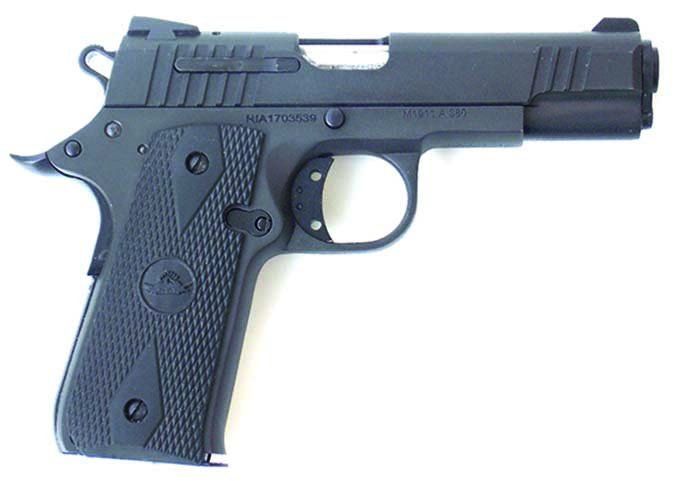
The Baby Rock has a lot going for it. The only true demerit was a stiff slide-lock safety. This loosened up during testing. Combat shooting gave good results. Accuracy was excellent.
| ACTION | Single action semi-auto; locked breech |
| OVERALL LENGTH | 6.6 in. |
| OVERALL HEIGHT | 4.6 in. |
| MAX WIDTH | 1.1 in. |
| WEIGHT UNLOADED | 22 oz. |
| WEIGHT LOADED | 24.1 oz. |
| BARREL LENGTH | 3.75 in. steel, 6 grooves, 1:16 twist |
| MAGAZINE | 7-rd. detachable box |
| SLIDE | Parkerized black steel; 3 front cuts; 5 rear cuts |
| FRAME | Parkerized black steel |
| FRAME FRONT STRAP HEIGHT | 2.3 in. |
| FRAME BACK STRAP HEIGHT | 2.8 in. |
| GRIPS | Checkered black polymer |
| GRIP THICKNESS (max) | 1.1 in. |
| GRIP CIRCUMFERENCE (max) | 4.6 in. |
| FRONT SIGHT | Serrated front blade; dovetail cut |
| REAR SIGHT | Two-dot low profile; dovetail cut |
| TRIGGER PULL WEIGHT | 4.5 lbs. |
| TRIGGER SPAN SINGLE ACTION | 2.25 in. |
| SAFETIES | Slide lock lever; grip |
| WARRANTY | Limited lifetime |
| TELEPHONE | (775) 537-1444 |
| WEBSITE | Armscor.com |
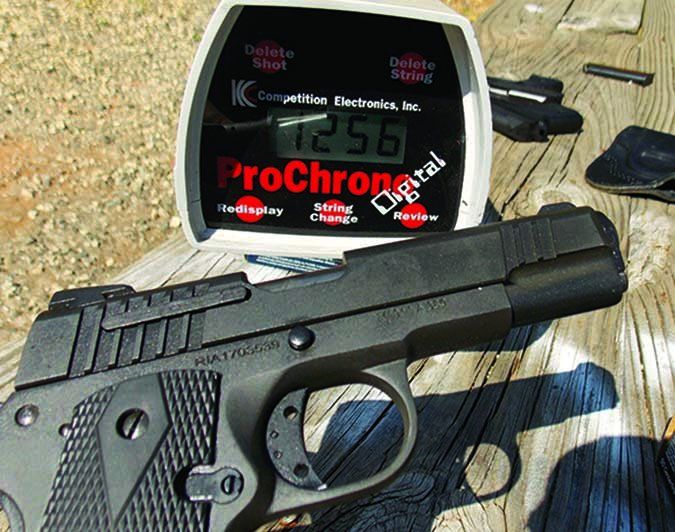
The Rock Island Baby Rock 51912 380 ACP, $356, is a 1911-like 380 ACP pistol. When we say 1911-like, many may compare the pistol to the Kimber 380 or the Browning 380 pistol previously tested. The Rock is longer than the Kimber and shorter than the Browning, not a bad place to be. The Rock is a true miniature 1911. The pistol features a plunger tube on the frame and also uses a grip safety, something the other small 1911 handguns do not. The slide is machined from steel. The extractor is an external type. The ejection port is generous. There are two sets of cocking serrations front and rear. The forward set is smaller but effective.
The sights are excellent for a small pistol. The front sight appears attached by a tiny set screw. The rear sight is dovetailed in place. These sights are useful for shooting to 25 yards or more. The slide lock and magazine release are 1911 types, positive in operation. The grip safety is a beavertail type we liked very much. The slide lock safety is positive in operation. The safety was never difficult to use, but it was stiff in operation when first manipulated. It became smoother in use. A definite click was heard when the safety was taken off. Our 1911 fans rated this as ideal.
The front strap is smooth with a slight recurve at the base. The rear strap features a grooved mainspring housing. The hammer is a steel skeletonized type. The trigger breaks cleanly at 4.5 pounds. Our raters felt that this trigger is as good a single-action trigger as we have felt from the factory. The pistol isn’t heavy, but at 22 ounces, it weighs almost as much as both of the other pistols tested put together.
The pistol was lubricated and taken to the firing range. The Rock was supplied with a spare 7-round magazine. The Remington also is delivered with a spare magazine; the Ruger is not. The pistol was loaded with the same mix of ammunition the other handguns were fired with. In combat drills there were no malfunctions of any type. There were no break-in malfunctions as with the Remington, and the pistol fired 100 rounds of mixed ammunition without issue. In combat firing the pistol was far more accurate than either of the pocket pistols. At 5 yards, a smooth DAO trigger is good enough for center hits, but by the time you get to 10 yards, the heavier weight of this solid-feeling 380 and straight-to-the-rear trigger compression of the single-action lockwork are great advantages. The raters conducted fast-paced drills and rapid mag changes that were not possible with the DAOs.
One foible, and it was shooter induced. On two or three occasions, the rater did not fire when he meant to because the grip safety was not completely depressed. (And this is our 1911 fan!) Simple firing-grip adjustment and attention to detail quickly solved this issue.
In benchrest accuracy testing, the Rock walked away from the other handguns because of its size.
The single best group was a 2.0-inch effort with the blistering hot Black Hills Ammunition 60-grain Xtreme Defense at 1250 fps. The Rock’s groups were half that of the Remington. The Baby Rock was by far the most comfortable pistol to fire from the benchrest.
Our Team Said: If you like cocked-and-locked carry, or even hammer down in the pocket, then you should make room for the Baby Rock, because it is quite a shooter.
380 ACP Self-Defense Load Performance Data
| GUN: Rock Island Armory Baby Rock w/ 3.75 in. barrel | AVERAGE VELOCITY (fps) | MUZZLE ENERGY (ft.-lbs.) | AVERAGE ACCURACY (in.) | POWER FACTOR (pf) | EXPANDED WIDTH (in.) | RETAINED WEIGHT (gr.) | PENETRATION IN WATER (in.) |
| 56-gr. Ruger ARX | 1209 | 181 | 2.6 | 68 | 0.355 | 100% | 13 |
| 60-gr. Black Hills FMJ D380N420 | 1240 | 205 | 2 | 74 | 0.355 | 100% | 13 |
| 62-gr. RIP JHP | 1280 | 225 | 2.6 | 79 | frag | 50% | 9 |
| 80-gr. Cor-Bon DPX | 1104 | 216 | 2.5 | 88 | 0.46 | 100% | 14 |
| 90-gr. Fiocchi JHP 380APHP | 927 | 172 | 2.5 | 83 | 0.50 | 75% | 12 |
| 90-gr. Hornady FTX | 920 | 169 | 2.1 | 83 | 0.50 | 100% | 11 |
| 90-gr. Hornady XTP 90104 | 933 | 174 | 1.6 | 84 | 0.52 | 100% | 13 |
| 90-gr. HPR XTP | 878 | 154 | 1.8 | 79 | 0.45 | 100% | 13 |
| 95-gr. Winchester | 884 | 165 | 2.4 | 84 | 0.54 | 100% | 10 |
| 99-gr. Federal HST P380HST1S | 1043 | 239 | 2.4 | 103 | 0.70 | 97% | 13 |
| Notes: Average Velocity readings were recorded by firing 10-shot strings over a Competition Electronics Pro Chrono chronograph. The muzzle was 10 feet from the first skyscreen. Ambient temperature: 60 degrees. Elevation: 815 feet above sea level. l The accuracy figures are the average of two five-shot groups. For accuracy, we fired the test gun from a benchrest at a 15-yard target. l To calculate IPSC power factor, multiply bullet weight in grains by the velocity in fps, then divide by 1000. l The retained-weight column shows the recovered bullet weight as a percentage of the actual bullet weight. | |||||||
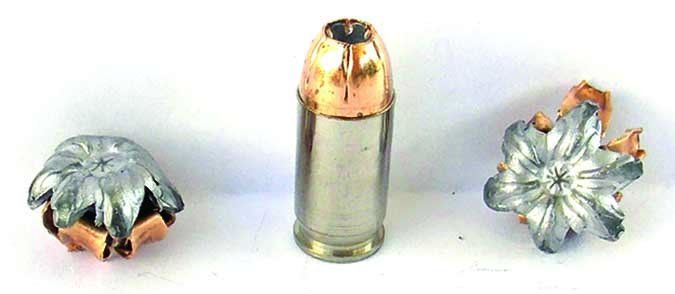
In our experience, modern shooters tend to look at the 380 as a lighter alternative to the 9mm, but a better comparison is between the 38 Special snubnose and the 380. So, as a point of reference, when we tested 380 ACP loads this year, we included a middle-of-the road 125-grain JHP 38 Special +P load fired from a 2-inch-barrel revolver to represent an average for performance with the 125-grain JHP.
Test Setup
We fired horizontally into gallon jugs at 10 feet. The jugs are 6 inches deep, so measuring penetration was a simple thing if the bullet penetrates at least two jugs. Often the bullet barely penetrated the third or was found resting in place at the bottom of the jug, allowing interpretation of the distance traveled.
Federal Premium 380 ACP 99-Grain HST JHP P380HST1S, $20/20 @ MidwayUSA.com
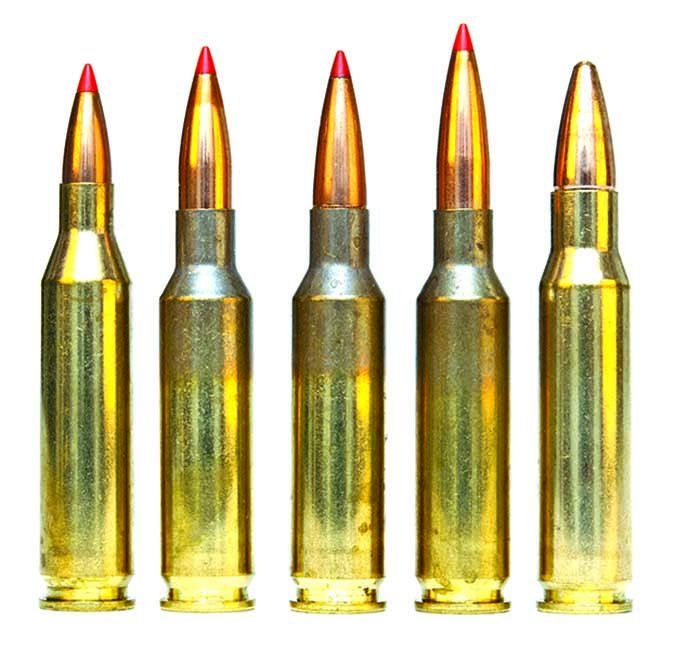
This load gave unexpected results. This is the fastest load tested over 70 grains, and it is heavier than the average 90- to 95-grain JHP. Yet velocity was high at a solid 1043 fps average. Energy was greater than any other load. Recoil was greater than the other loads, but it was not uncomfortable. Penetration went to a full 13 inches and expansion to .70 caliber.
GUN TESTS GRADE: A+
Black Hills 380 ACP 60-Grain Xtreme Defense D380N420, $26/20 @ MidwayUSA.com
Costing $1.30 per shot, this 60-grain load uses a solid all-copper projectile. Penetration is superior to the Ruger ARX solid bullet. Velocity is slightly higher. Penetration was on the level with the Cor-Bon 70-grain JHP and the Federal 99-grain HST. This bullet is a good choice for personal defense. Among non-expanding loads, this bullet is much superior to a FMJ bullet. This was the most pleasant load to fire. Accuracy was likewise outstanding, being bested by the Hornady XTP and the HPR loads.
GUN TESTS GRADE: A
Hornady American Gunner 380 ACP 90-Grain XTP Jacketed Hollow Point 90104 $16.50/25 @ MidwayUSA.com
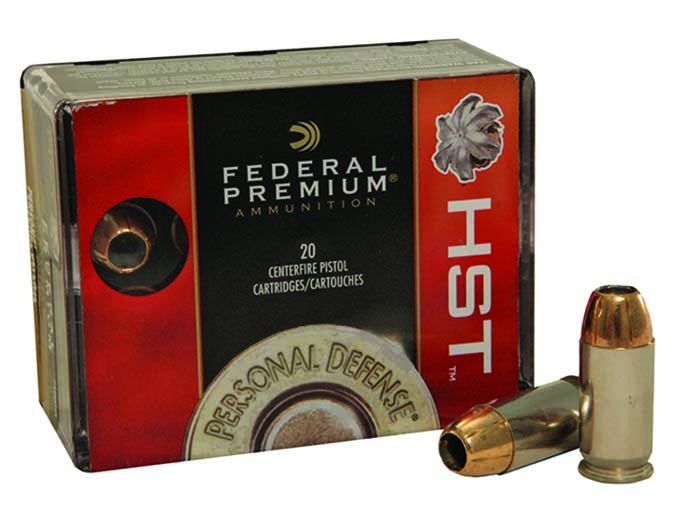
The American Gunner XTP gave credible results, including the best accuracy of any load tested this time around. The XTP is a proven bullet that offers good expansion in most scenarios. The XTP posted 933 fps velocity. Expansion was adequate, winding up at the 12-inch threshold. Expansion was adequate at .52 inch.
GUN TESTS GRADE: A
Ruger Self Defense 380 ACP 56-Grain PolyCase ARX $20/25 @ MidwayUSA.com
The Ruger ARX load is designed to offer an alternative for those who feel that JHP loads do not offer adequate penetration for smallish pistols.
GUN TESTS GRADE: A
Winchester Super X3 Waterfowl Hunter Mossy Oak Shadow Grass 511155291 12 Ga., $1200
GUN TESTS GRADE: A

Excellent handling, very smooth and quick functioning, and a lower price were the trio of factors that pushed the Winchester to the top of our list.
| ACTION TYPE | Semiautomatic |
| CHAMBER SIZE | 2.75 to 3.5 in. |
| OVERALL LENGTH | 48.75 in. |
| CAPACITY | 5 |
| WEIGHT UNLOADED | 6.75 lbs. |
| BARREL | 28 in. long; Dura-Touch Mossy Oak Shadow Grass finish |
| RECEIVER | Aluminum alloy; Dura-Touch Mossy Oak Shadow Grass finish |
| CHOKE | Screw-in invector-plus (IC, mod, full) |
| BUTTSTOCK | Dura-Touch Mossy Oak Shadow Grass finish |
| BUTTSTOCK LENGTH OF PULL | 14.25 in. |
| BUTTSTOCK DROP AT COMB | 1.5 in. |
| BUTTSTOCK DROP AT HEEL | 2 in. |
| FOREARM | Composite; Dura-Touch Mossy Oak Shadow Grass finish |
| FOREARM LENGTH | 12.5 in. (textured) |
| FRONT SIGHT | Red fiber optic bar |
| MID-BEAD | None |
| TRIGGER PULL WEIGHT | 6 lbs.; black trigger |
| WARRANTY | 1 year limited |
| TELEPHONE | (800) 333-3288 |
| WEBSITE | WinchesterGuns.com |
| MADE IN | Portugal |
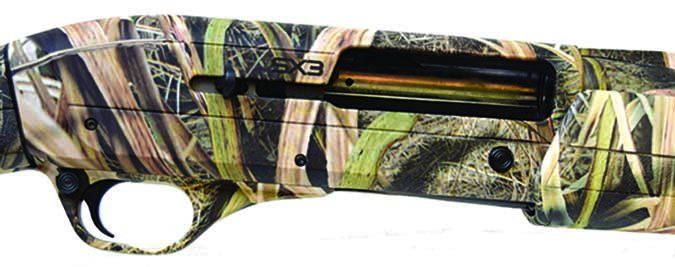
Billed as being able to cycle five rounds in less than half a second, the Winchester Super X3 Waterfowl Hunter Mossy Oak Shadow Grass 511155291 12 Gauge, $1200, is a sleek, smooth and effective shooting tool. Without question, the Winchester cycled both clay target rounds and heavy steel loads faster than any of the other shotguns in the test. Felt recoil was also the lightest of all the semiautomatics we put through their paces, our shooters said.
Sporting a Dura-Touch finish, we were pleased with the feel and handling ability of the Winchester. As veteran shooters can attest, sometimes a shotgun just feels like it belongs in your hands – this was the case with the Winchester.

With an overall length of 48.75 inches; a 28-inch barrel; a length of pull of 14.25 inches; a drop at the comb of 1.5 inches; and a drop at the heel of 2 inches, the fit was fine for all members of our team. We noted the trigger pull of 6 pounds was slightly heavier than we would have liked, but was very crisp and did not hinder our target-breaking abilities.
Quick to bring to bear on targets, the Winchester consistently broke more clays with more authority than any of the other shotguns in the quartet. While the old saying of “It is not the tool, it is the worker,” applies in most cases, having a good tool in your hands can’t hurt a shooter’s performance in the field.
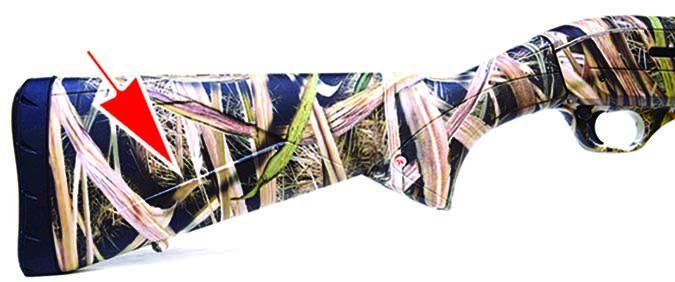
The patterning board gave testament to why our clay target breaking success was high with the Winchester. The modified barrel produced a 60-40 pattern with the clay target shot and a 58-42 pattern with the steel shot. All of the steel shot was in a solid pattern within a 20-inch circle surrounding the center of the pattern paper and there were no holes in any of the quadrants with the clay target load. There were no malfunctions of any kind with any of the loads and.
Our Team Said: The slightly lower price tag compared to others in the test helped us choose the Winchester.
Ruger Precision Rifle 18008 6.5 Creedmoor, $1599
GUN TESTS GRADE: A

This is another solid effort by Ruger. They took an already good gun and made it a touch better. The add-ons work great, but you may want to accessorize it yourself.
| ACTION | Bolt, 3 lugs, parkerized finish |
| OVERALL LENGTH (min/max) | 43.25 in./46.25 in. |
| FOLDED LENGTH | 35.60 in. |
| BARREL | 24 in. long, 1:8 twist, 5 grooves, parkerized finish; fluted, 5/8″-24 threads, RPR hybrid muzzle brake |
| OVERALL HEIGHT (w/o scope) | 7.3 in. |
| WEIGHT UNLOADED | 10.75 lbs. |
| WEIGHT LOADED | 11.25 lbs. |
| MAGAZINE | (2) 10-rd. Magpul PMAGs |
| BUTTSTOCK | Adjustable, folding, anodized aluminum |
| BEDDING | Modular free float |
| BUTTPLATE | Rubber, adjustable cant |
| LENGTH OF PULL (standard/set) | 12 in./15.5 in. |
| HANDGUARD | RPR short action |
| RECEIVER SCOPE-BASE PATTERN | Picatinny |
| TRIGGER PULL WEIGHT | 2 lbs. |
| SAFETY | Rotating thumb |
| WARRANTY | None written |
| TELEPHONE | (336) 949-5200 |
| WEBSITE | Ruger.com |
| MADE IN | USA |
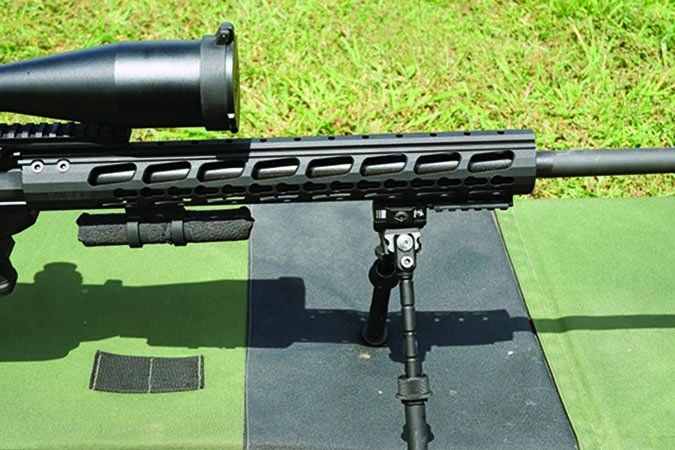
In the January 2016 issue we published a test of bolt-action rifles chambered for 6.5 Creedmoor, including a Howa Austrian Brown Cerakote, a Savage Arms Model 12 LRP, and a Ruger Precision Rifle. All three rifles were impressive, but since then Ruger has released an Enhanced version, so we thought we’d better get one and see if the new features were worth the extra $200.
The model number for the (original) 6.5CM Ruger Precision Rifle previously tested was 18005. The Enhanced version is number 18008. Both rifles utilize a 24-inch-long medium-contour cold-hammer-forged barrel with a 1:8 twist. It is attached to an adaptation of the Ruger American action fed by a 10-round removable box magazine. The fully adjustable butt stock was the same, and so was the adjustable trigger. Our earlier test gun came trigger-pull weight adjusted to 2.6 pounds, with variation measured to be 1.4 ounces. Despite the owner’s manual claiming that the adjustable range was 2.25 pounds to 5.0 pounds, our Enhanced rifle arrived with a 2-pound trigger with variation of only about 0.8 ounces.
The 18008 (Enhanced) rifle weighed about 0.1 pound more, even though the Samson Evolution Key Mod handguard was replaced by Ruger’s trimmer RPR Short-Action handguard, which also does away with the integrated top rail.
To compare the difference in cost between the suggested retail price of an RPR Enhanced with common upgrades purchased aftermarket, we visited the RPR Pro Shop at LongRiflesinc.com. We found a bolt shroud for $60 and a muzzle brake for $180. Brownells offered handguards starting at $175, so the Enhanced model does save the shooter about $215 if the shooter were to upgrade the rifle himself.
For recording accuracy data, we were able to fire two of the three rounds used in our earlier test. They were Hornady’s 120-grain A-Max and the Hornady 129-grain SST. Hornady’s 143-grain ELD-X Precision Hunter rounds were fired in place of the 140-grain A-Max ammunition we shot in the first test. After a careful break-in consisting of 50 rounds, we mounted a Steiner 5-25x56mm Military Scope with Horus Reticle and recorded the groups fired from the 100-yard bench at American Shooting Centers. Called bad shots were counted. Firing the 120-grain and 129-grain resulted in widest groups of 0.93 and 0.95 inches respectively. We still managed to record average groups measuring less than 0.75 inches across because the smallest groups for the 120s measured 0.60 inches and the SST rounds delivered a 0.57-inch-wide group. The 143-grain rounds showed the most consistency, with groups measuring between 0.45 inches and 0.6 inches.
Our Team Said: The change from a plastic to an aluminum bolt shroud was a no-brainer. The muzzle brake was not as loud as others and definitely helped keep the rifle from moving upward or torqueing away from point of aim. A comparison on the accuracy chart shows the Enhanced wins out. Maybe not by a lot, but we think more accurate results were easier to achieve. To answer the question as to which rifle is a better buy, it’s probably a question of how much you want to modify the rifle. Costwise, the Enhanced certainly has a leg up versus aftermarket costs, and there’s always something to be said for buying a second-generation product.
Palmetto State Armory AK-47 MOE Edition 7.62x39mm, $749
GUN TESTS GRADE: A

This AK with modern Magpul furniture updated the design; accuracy was acceptable, as well as the price.
| ACTION TYPE | Semiautomatic long-stroke gas piston |
| OVERALL LENGTH (min/max) | 35.25 in. |
| OVERALL HEIGHT | 8 in. |
| WEIGHT UNLOADED | 6.7 lbs. |
| WEIGHT LOADED (w/30-rd. mag) | 8.2 lbs. |
| BARREL | 16.2 in. long; 4150 steel; 1:9.5 twist, Melonite finish |
| MUZZLE DEVICE | Slant brake, 14-1 LH threads |
| BUTTSTOCK | Black Magpul MOE AK |
| LENGTH OF PULL | 12.8 in. |
| HANDGUARD | Black Magpul MOE AK |
| GRIP | Black Magpul MOE AK |
| RECEIVER | Stamped blued steel |
| MAGAZINE | (1) Magpul PMAG, 30 rds. |
| REAR SIGHT | Tangent leaf, elevation adjustable |
| FRONT SIGHT | Winged post, windage adjustable |
| SIGHT RADIUS | 15 in. |
| TRIGGER | 5.5 lbs., Mil-spec, single stage, double hook |
| SAFETY | 2-position lever |
| WARRANTY | Limited lifetime |
| TELEPHONE | (803) 724-6950 |
| WEBSITE | PalmettoStateArmory.com |
| MADE IN/BY | USA/Palmetto State Armory |
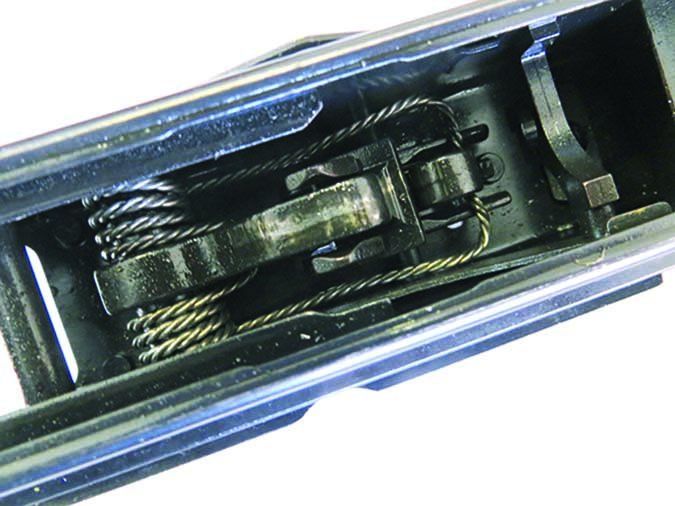
Looking at the Palmetto State Armory AK-47 MOE Edition 7.62x39mm, $749, out of the box, our team thought the PSA AK-47 MOE Edition would cost almost twice the list price, and that was because of the finish and the Magpul MOE furniture. The blued finish was excellent. The AK-47 MOE rifle looked fine from muzzle to butt with blued metal and the modern polymer buttstock and furniture. The MOE furniture gave the old AK platform a refreshingly new look and feel. The handguard, we thought, allowed for a better grip since it was ribbed and had an integrated heat shield to protect the shooter from barrel heat from excessive firing. The fixed stock was a good length of pull at 12.8 inches, though the tall shooters would have liked a slightly longer LOP. The stock has a hidden compartment under the cheek rest to store small items. An optional cheek riser can also be added at additional cost (Magpul.com; $9.95). It also had a rubber buttpad. The pistol grip was a Magpul MOE, also with a storage compartment. We liked the furniture and thought it gave the AK better ergonomics than traditional wood. The Magpul MOE lightened the AK to 6.7 pounds; the Classic Red with wood stock/furniture weighed 9 pounds, and the Century 9.6 pounds.
Test members also noticed the smoothness of the action. It cycled slickly and was super smooth. The safety lever did not drag over the side receiver and it was precise. On some rebuilds we have found the safety selector drags along the side of the receiver and can be loose, not providing confidence. A cleaning rod and one Magpul mag were included.
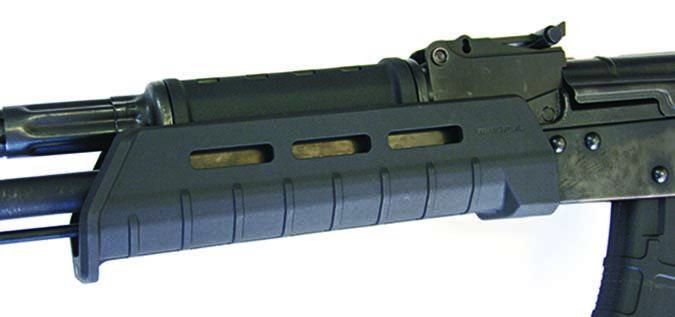
The PSA AK-47 MOE employed a 1-millimeter-thick stamped heat-treated carbon-steel receiver with a side mount that allows a shooter to attach an optic. We used a Russian-built PK-01 VS red dot optic from Kalinka Optics and found the optic sat low and just above the dust cover. A good set up. When we found that the PK-01 did not lock in place on the Century rifle we decided to keep the playing field level and test with open sights. But this was a major plus, in our eyes.
A 16.2-inch 4150 steel barrel that was Melonite treated had six-groove rifling with a 1:9.5 twist. The classic slanted muzzle brake was attached onto the barrel’s muzzle. Sights were traditional, with an 800-meter rear sight and adjustable front sight. The trigger was an ALG single-stage model with a smooth press and shorter pull than the standard AK trigger. Its required a 5.5-pound press to fire. It had initial take up but a relatively clean break. The MOE edition also used a standard magazine release. We used both polymer Magpul and aluminum Polish surplus magazines and had no issues inserting the magazines or running the AK on the magazines. We ran the AK hard and it performed.
Using a rest at 100 yards we were able to get three-shot groups under 4 inches with Hornady steel case ammo and steel case Wolf ammo, which we thought was good accuracy considering we were using open sights and the triggers was not designed for precision work.
Our Team Said: The PSA MOE edition clearly updated the handling and balance of the AK-47 platform.
Beretta Model 1301 Tactical No. J131T18 12 Gauge, $1075
GUN TESTS GRADE: A

Just a little lighter and quicker to bring on target, the Beretta performed without a hiccup while producing good patterns and loading fast.
| ACTION TYPE | Semiautomatic |
| CHAMBER SIZE | 2.75 to 3 in. |
| OVERALL LENGTH | 38.25 in. |
| CAPACITY | 5 |
| WEIGHT UNLOADED | 6.25 lbs. |
| WEIGHT LOADED | 6.9 lbs. |
| BARREL LENGTH | 18.5 in. |
| BARREL | Matte black |
| RECEIVER | Matte black |
| CHOKE | Fixed cylinder |
| BUTTSTOCK | Black synthetic, checkered grip |
| BUTTSTOCK LENGTH OF PULL | Adjustable 13.25 to 14.5 in. |
| BUTTSTOCK DROP AT COMB | 1.5 in. |
| BUTTSTOCK DROP AT HEEL | 2.25 in. |
| FOREARM | Black synthetic, checkered |
| FOREARM LENGTH | 13 in. |
| FRONT SIGHT | Interchangeable raised white dot |
| REAR SIGHT | Ghost ring (adjustable) |
| TRIGGER PULL WEIGHT | 5 lbs. |
| WARRANTY | 1 year limited |
| TELEPHONE | (800) 237-3882 |
| WEBSITE | Beretta.com |
| MADE IN | Italy |
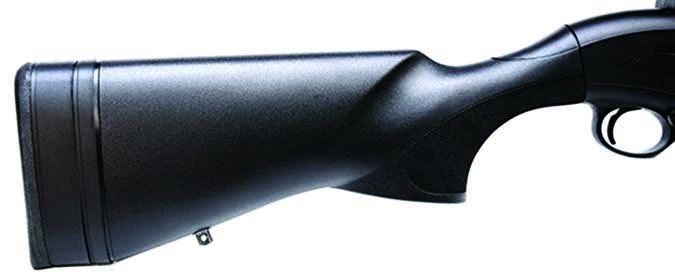
The Beretta Model 1301 Tactical J131T18 12 Gauge, $1075, is a very light and quick semiautomatic that is a recent entry into the tactical market. Stand-out features at first glance include the oversized charging handle, a large textured bolt release, and an oversized reversible safety button. We were pleased with both the aesthetics and functionality of these features, along with the deep checkering on both the forearm and stock that earned the Beretta plus marks for easy and secure use.
The barrel of the tactical shotgun sat deeper in the forearm than the other models, giving the firearm a sleek look in addition to adding to the quickness factor of getting on targets. With an overall length of 38.25 inches and tipping the scales at just 6.25 pounds (the lightest of the test gun trio), we were pleased with the overall feel and handling ability of the shotgun. It should be noted that we did attach stock spacers included in the box to give the Beretta a length of pull of 14.5 inches, rather than the original 13.25 inches. The longer LOP was more comfortable for our test team, and we also felt that this additional length helped control felt recoil from the various test rounds.
According to the company’s advertising, the Beretta features an integrated Blink gas operating system with a cross tube gas piston; a rotating bolt head lock-up; and a new feeding system that supposedly allows the Model 1301 to cycle 36 percent faster than any other semiautomatic shotgun on the market. We found it cycled faster than either of the other two shotguns in our match-up.
The drop at the comb was 1.5 inches and the drop at the heel was 2.25 inches, providing us with quick and easy target acquisition. We had no problems with putting the semiautomatic into play during speed drills and rapid fire tests. The Model 1301 Tactical features a Ghost Ring rear sight system that is also interchangeable, which is very easy to use and quick to put on target even in low-light conditions.
Breaking at a crisp 5 pounds, the trigger pull of the Beretta also earned the shotgun good marks. The Beretta fared very well on the range, producing an average 7-inch pattern with slugs at 30 yards and an average 6.75-inch pattern with eight pellets of No. 00 buckshot. Hits were all in the center mass area.
During the five-shot speed drill, the shells were all touched off in exactly 1.0 second. The first shot was at 0.45, followed by a shot at 0.71, 0.96, 1.20 seconds, and 1.45 seconds. Shots were alternately fired at two separate targets about 2 feet apart in a very effective manner.
To test the speed-loading ability of the shotgun, we started with a chambered round and another round in our left hand (each member of our test team is right handed). At the sound of the beep from the timer, the chambered round was fired, a round was then dropped in the open chamber, the action was closed and another shot was touched off. The drill was completed in an average of 2.79 seconds, well under the times for either the Mossberg (3.66 seconds) or the Benelli (4.03 seconds). Both speed-drill shots were on target, and we were impressed with the quick, accurate performance of the 1301.
As noted earlier, felt recoil with the Beretta was not considered uncomfortable with any of the loads, and there were zero malfunctions during any of the live-fire testing.
Our Team Said: The 1301 was a lighter, quicker and easier-to-handle shotgun than the other two semiautomatics. We believe the Beretta will meet and exceed the needs of the shooting public seeking a self-defense firearm. Falling in the middle of the price range of the trio didn’t hurt.
Glock G20 Gen4 10mm, $687
GUN TESTS GRADE: A-
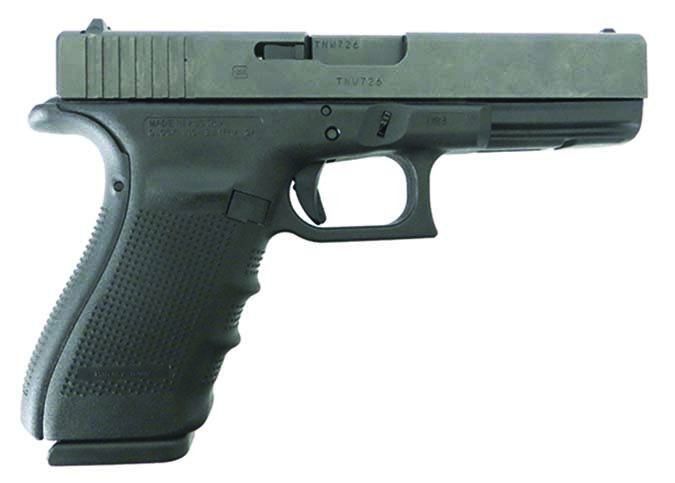
This G20 offered the most DIY customization, was the softest shooter and was accurate, plus the price was less. Also, it was the best suited for concealed carry.
| ACTION | Semi-auto, locked breech DAO |
| OVERALL LENGTH | 8 in. |
| OVERALL HEIGHT | 5.5 in. |
| MAX WIDTH | 1.3 in. |
| WEIGHT UNLOADED | 30.7 oz. |
| WEIGHT LOADED | 39.5 oz. |
| BARREL | 4.6 in. |
| CAPACITY | 15+1 |
| SLIDE | Black, steel |
| FRAME | Black, polymer |
| FRAME FRONT STRAP HEIGHT | 2.6 in. |
| FRAME BACK STRAP HEIGHT | 3.6 in. |
| GRIPS | Textured polymer w/ finger grooves |
| GRIP THICKNESS (max) | 1.3 in. |
| GRIP CIRCUMFERENCE (max) | 6.3 in. |
| FRONT SIGHT | Fixed dot |
| REAR SIGHT | Outline, driftable |
| TRIGGER PULL WEIGHT | 5.5 lbs. |
| TRIGGER SPAN | 2.9 in. |
| MAGAZINES | 3; polymer |
| SAFETY | Trigger lever |
| WARRANTY | 1 year limited |
| WEBSITE | US.Glock.com |
| MADE IN | Austria |
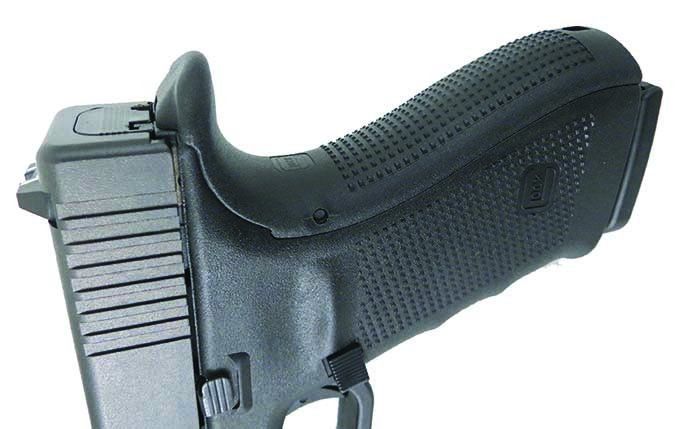
The Glock G20 Gen4 10mm, $687, is the latest evolution of Glock pistols with replaceable back straps to fit a variety of hand sizes. Testers liked the ability to swap back straps; four sizes came with the pistol or the pistol could be used without a back strap, so five possible grip configurations are available. Some testers with smaller hands thought the Glock still felt a bit chunky in the hand compared to the other pistols.
The accessory rail on the G20 Gen4 was smooth, which made it easier to holster. In fact, testers felt the G20 was the most comfortable 10mm to carry due to its light weight of only 39.5 ounces loaded. The G20 also has the three safety features: trigger, firing pin, and drop safety. This is a very safe pistol.
The sights on the Glock are serviceable, but were the least liked by testers. The plastic front used a dot with the plastic rear sight outlined. The target picture was fine, but we preferred the sights on the other two pistols. Glock sights are easily replaced (Store.TeamGlock.com; $10-$32), and there are numerous aftermarket sights which still cost more, bringing the Austrian entry in line with the cost of the RIA but still well under the SIG.
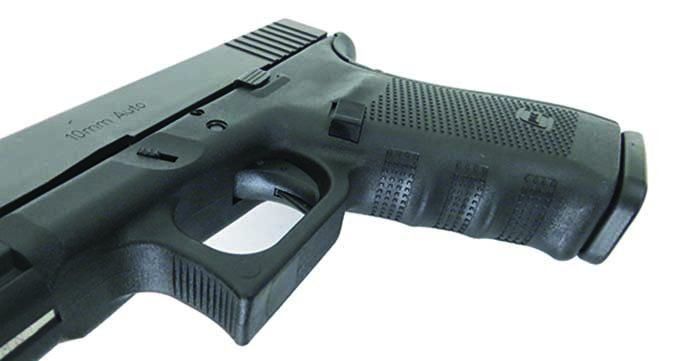
The trigger was typical Glock, with a pull weight of about 5.5 pounds. It is a trigger we have come to accept or enhance with drop-in aftermarket trigger kits. The Glock we felt was more easily customized by the owner than the RIA or SIG, and that was a plus. In fact, our test pistol was owned by one of our staff, who also had an extra 6-inch hunting barrel (Store.TeamGlock.com; $150), which added to the total cost of the pistol.
The longer barrel allowed the Glock to generate more velocity with the 10mm ammo, averaging about 30 fps extra per load, but when we reviewed the range data, the Glock data was still lower than the other two pistols, even with the addition of a 6-inch barrel. Data still showed the Glock lagging behind the velocity of the RIA and SIG. We were had hoped the 6-inch hunting barrel would eke out more velocity, but it essentially leveled the velocity playing field between the pistols, while adding length to the Glock.
At the range, we found the Glock provided the second-best accuracy, on average, of the three pistols. With the defense loads — Federal Hydra-Shok and SIG V-Crown — the best 5-shot group was tied at 0.7 inches. Testers felt the Glock was also the softest shooting of the pistols, hands down. The polymer frame of the G20 flexed to help absorb recoil, while the slightly fatter grip had more contact with the palm, so recoil was more spread out.
Our Team Said: The Glock was the softest shooter. The girth was larger, but manageable, and the trigger was a Glock trigger that could be improved with an aftermarket kit. Plus there are numerous other parts to customize the pistol.
Weatherby SA-08 Deluxe 28 Gauge, $899
GUN TESTS GRADE: A

Sub-gauge recoil with big-gun balance and feel makes this a great all-round shotgun.
| ACTION TYPE | Semi-auto, gas operated |
| CHAMBER SIZE | 2.75 in. |
| OVERALL LENGTH | 48.75 in. |
| CAPACITY | 5+1 |
| WEIGHT UNLOADED | 5.5 lbs. |
| BARREL | 28 in., blued steel, chrome lined |
| RECEIVER | Blued steel |
| CHOKE TUBES | IC, M, F |
| STOCK | High-gloss walnut |
| BUTTSTOCK LENGTH OF PULL | 14 in. |
| BUTTSTOCK DROP AT COMB | 1.5 in. |
| BUTTSTOCK DROP AT HEEL | 2.25 in. |
| FOREARM | High-gloss walnut |
| FRONT BEAD | Brass |
| REAR BEAD | None |
| RIB WIDTH | 0.25 in. |
| TRIGGER | 5.8 lbs. |
| WARRANTY | None written |
| TELEPHONE | (805) 227-2600 |
| WEBSITE | Weatherby.com |
| MADE IN/ASSEMBLED IN | Turkey |
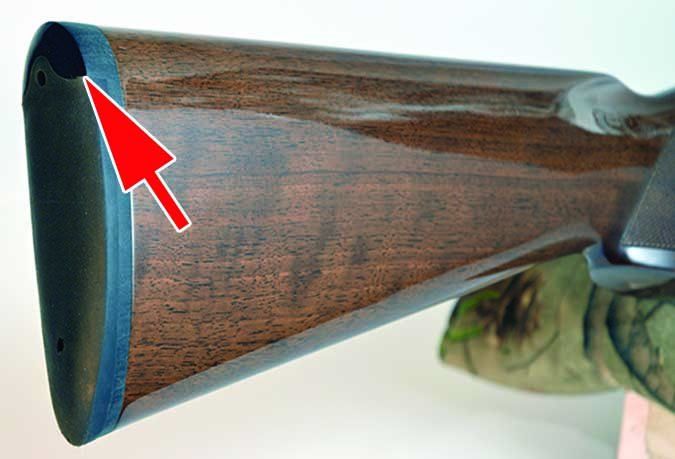
When you look at the Weatherby 28 Gauge SA-08 Deluxe, $899, at first glance, it can be difficult to gauge what the Weatherby SA-08’s chambering is. Its appearance was much closer to that of a full-size 12-gauge shotgun. We’re not sure what caused that.
Obviously, some care was taken in the selection of the wood. The pistol grip and the forend were machine checkered, probably by pressure but in a classic pattern. The bolt and bolt-release button were chromed. The trigger was stainless steel, and the trigger guard was polymer with a crossbolt safety at the rear, where it joined the receiver.
The barrel sported a 1⁄4-inch-wide ventilated rib with only a front brass bead as a sight. The gun arrived with three flush-fit chokes (Improved Cylinder, Modified, and Full) plus one of five different polymer shim plates installed that left the stock cast slightly off to the right. Changing shims required a Phillips-head screwdriver to remove the buttpad, which consisted of a 0.4-inch-thick medium-soft rubber with a smooth plate at the heel, then a 13mm socket wrench to remove the stock. Weatherby recommends that at least one plate be in place at all times.
Weighing in at about 5.5 pounds, the gun seemed a little light for its size. The long barrel made it feel whippy at first, but each shooter in our test team found it easy to adjust his or her swinging motion after just a couple of rounds of skeet.
With a full complement of six rounds loaded, the gun’s handling slowed considerably. But even when loaded with only two rounds for the skeet field, the Weatherby transferred the least amount of felt recoil. We did have one failure to feed after about 200 rounds of fire without lubrication. A spray of RemOil and about 300 rounds later, the Weatherby had not been cleaned and no sign of any malfunctions reappeared.
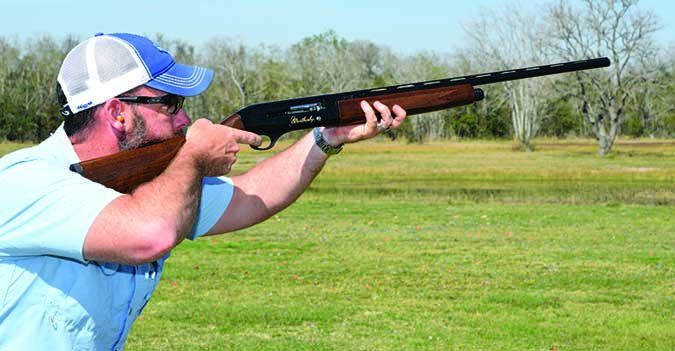
Patterning the Weatherby SA-08 showed a very similar performance to the Benelli, but with a few more fliers when loaded with the Estate Super Sport Competition Target load. Maybe the manufacturer was not so important in our patterning tests as was the configuration. It is interesting to note that the Weatherby preferred 7 shot, the Benelli No. 8 shot, and the Franchi shotgun No. 9s.
Without changing the original shim setup, we had to work a little harder to center our shots on the pattern board. But with so many shims supplied, we were confident it wouldn’t take much to adapt the drop and cast to just about any shooter.
Our Team Said: The top competitors among our team shooters couldn’t put their finger on any one aspect that was over the top great about it, but by the end of the day, the SA-08 was the gun most of us wanted to continue to shoot. The more we shot it, the more we forgot what gauge it was or how relatively little it cost. More than one shooter agreed they would buy an SA-08 no matter how well the other guns performed.
Mossberg MVP Long Range (LR) 27697 7.62mm NATO/308 Win., $945
GUN TESTS GRADE: A-

The MVP LR is well suited as an entry-level rifle for long-range shooting; it offered reasonable accuracy.
| ACTION TYPE | Bolt, 2 lugs, 60 degree lift; tactical handle |
| OVERALL LENGTH | 39.5 in. |
| BARREL | 20 in. matte blued steel; medium bull fluted, threaded |
| OVERALL HEIGHT | 6.5 in. |
| STOCK LENGTH OF PULL | 13.25 in. |
| WEIGHT UNLOADED | 8 lbs. |
| WEIGHT LOADED | 9.3 lbs. |
| CAPACITY | 10+1 |
| ACTION | Matte blued steel, installed picatinny rail |
| MAGAZINE | Detatchable polymer box; accepts M1A/M14 and AR10-style |
| STOCK | Polymer pillar bedded; adjustable cheekrest; OD green stippled benchrest style, dual front swivels |
| TRIGGER PULL WEIGHT | 3 lbs., LBA adjustable |
| SAFETY | 2 position |
| ACCURACY GUARANTEE | None |
| WARRANTY | 1 year limited |
| TELEPHONE | (203) 230-5300 |
| WEBSITE | Mossberg.com |
| MADE IN | USA |
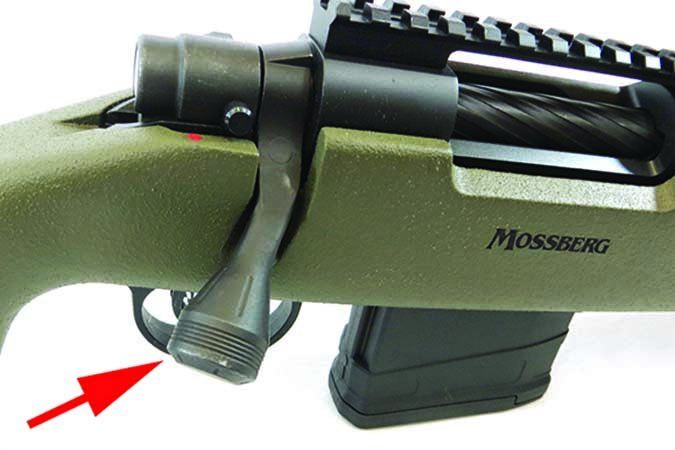
Using the Gallery of Guns Gun Genie on the Mossberg site, we found several Mossberg MVP LR 27697 7.62mm NATO/308 Win. rifles near the Houston office selling for between $696 (FountainFirearms.com) and $815 (FullArmorFirearms.com). The Mossberg MVP LR is built off Mossberg’s MVP series of rifles. It uses a proprietary bolt-face design that feeds from both standard AR-10 style and M1A/M14-style magazines. We had plenty of Magpul AR-10 style magazines on hand and had no issues with them.
The bolt was a push-feed style with two lugs, and it cocked on opening. Manipulating the bolt was smooth, and it wiggled slightly, but we had no issues working it from a variety of shooting positions. The bolt body had a decorative spiral, and the bolt handle had a large tactical-style knob, which we liked. The bolt throw was 60 degrees, which gave plenty of room for our fingers between the bolt handle and the Meopta’s eyepiece. A one-piece Picatinny style rail came installed on the receiver, and it provided enough space to mount the large Meopta scope. However, we would have liked a slightly longer rail because the Meopta is such a long scope, as are other long-range glass.
The safety had two positions; fully forward is the “Fire” position; fully rearward is the “Safe” position, which locks the trigger, though the bolt can be manipulated to eject a round out of or into the chamber. It was located on the right side of the receiver and fell under the thumb of a right-handed shooter. The bolt release was located on the left side of the receiver. To remove it, partially retract the bolt, press the bolt release button, and the bolt assembly pulls free from the receiver. The 20-inch barrel had a 1:10-inch twist and a medium-bull taper with shallow flutes. The muzzle was threaded for a device and wore a protective sleeve, which we liked. The magazine release was inset into the bottom of the stock so there is no fear of an accidental magazine dump. The inset was small, and large-fingered shooters could only get the tip of a finger into the hole to press the release paddle. The paddle was flush with the bottom of the stock. All metal wore a nice matte-blue finish.
The trigger is Mossberg’s LBA system, which allows users to adjust the trigger. From the factory, ours measured 3 pounds. It was crisp with no take up and broke cleanly and consistently. The trigger guard and magazine well were polymer. Nit: A slight flare on the magazine well would make magazine changes a bit smoother, though we had no issues.
The synthetic stock is similar to a benchrest stock, with a wide, flat forend well suited for shooting off a rest and a vertical pistol grip with palm swell, which made shooting the rifle prone or seated very comfortable. The barrel was free floated in the stock from the action forward. The rubber buttpad was sharp edged and serrated; it stuck to our clothing. Sling swivel studs were installed, as well as an attachment point for a bipod.
We fired from the magazine and single-loaded cartridges with no issues, and found it quite easy to shoot three-shot groups under one MOA. With the Aguila 150-grain FMJ BT ammo, we were able to get our best group, three shots in 0.46 inches. With the Black Hills ammo, our best group opened to 0.66 inches. With Hornady Match, our best group was 1 inch. On average, this rifle shot just under 1 MOA for three shots at 100 yards.
Our Team Said: It is entirely possible the owner could find factory ammo and/or handload ammunition to get this gun at a half-inch at 100 yards.
Smith & Wesson M&P9L Performance Center Ported 10098 9mm Luger, $812
GUN TESTS GRADE: A
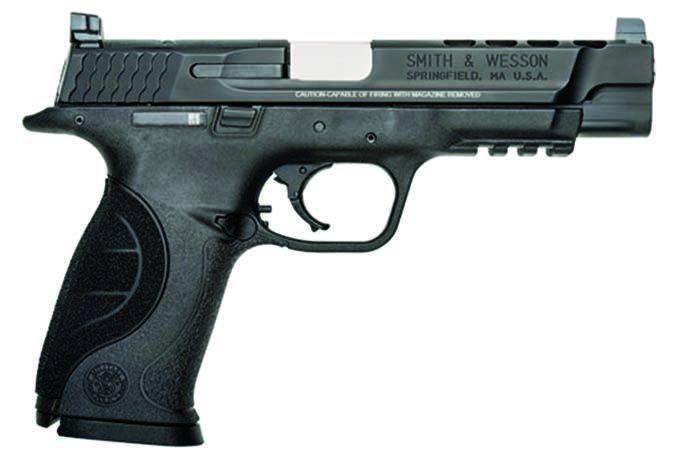
This Performance Center M&P9 provided six reflex-sight mounting options, had tall sights, and employed enhanced features that we thought made it a good value.
| ACTION | Semi-auto; double action striker fired |
| OVERALL LENGTH | 8.5 in. |
| OVERALL HEIGHT | 5.3 in. |
| MAX WIDTH | 1.3 in. |
| WEIGHT UNLOADED | 24.1 oz. |
| WEIGHT LOADED | 30.9 oz. |
| BARREL | 5 in. long, 8 ports; stainless steel |
| CAPACITY | 17+1 |
| SLIDE | Black, stainless steel, 8 ports; optics cut top |
| FRAME | Black polymer, 3-slot picatinny rail |
| FRAME FRONT STRAP HEIGHT | 2.3 in. |
| FRAME BACK STRAP HEIGHT | 3.4 in. |
| GRIPS | Textured polymer, 3 modular backstraps |
| GRIP THICKNESS (max) | 1.2 in., 1.25 in., 1.3 in. |
| GRIP CIRCUMFERENCE (max) | 5.5 in., 5.7 in., 6 in. |
| FRONT SIGHT | White dot dovetail |
| REAR SIGHT | Fixed, 2 dot |
| OPTICS MOUNTS | Trijicon RMR, Leupold DeltaPoint, Jpoint, Docter, C-More STS, Insight MRDS |
| TRIGGER PULL WEIGHT | 4.5 lbs.; adjustable trigger stop, performance center sear |
| TRIGGER SPAN | 2.6/2.8 in. |
| MAGAZINES | 1; steel, double stack |
| SAFETY | Decocking/safety lever |
| WARRANTY | Lifetime |
| MADE IN | USA |
| WEBSITE | Smith-Wesson.com |
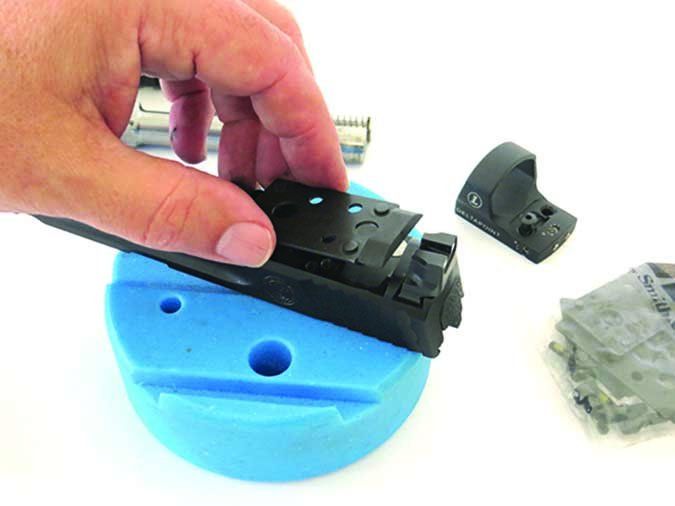
We found the Smith & Wesson M&P9L Performance Center Ported 10098 9mm Luger for as low as $656 cash at BudsGunShop.com. The Smith & Wesson M&P9 Performance Center Ported pistol was designed to compete out of box in action-shooting competitions. It comes in a hard case with one steel magazine, three grips and a tool to replace them, and S&W’s C.O.R.E. (Competition Optics Ready Equipment) adapter plates, screws, and wrenches for up to six reflex-sight options. We mounted the Leupold DeltaPoint and found the installation straightforward.
The process: First find the corresponding plate, place it on the slide, then use the two screws to sandwich the plate between the optic and slide. Just determine which adapter plate works with your sight; the Trijicon RMR, Leupold DeltaPoint, C-More STS, Doctor, and Insight MRDS are supported. Also, the M&P9 came with tall three-dot steel sights that co-witnessed with the Leupold and were dovetailed into the slide.
This Performance Center pistol featured a ported barrel with two oblong ports that aligned with the two forwardmost ports in the slide. The slide had eight slots milled into it to reduce weight and vent gases. The stainless-steel barrel also had a viewing port that allowed the shooter to see if a round or case was in the chamber. The recoil spring in the M&P9 was a flat coil spring with a steel one-piece recoil guide rod.
The frame featured three grip inserts that adjusted the trigger span as well as provide a bit of a palm swell. The panels had a toothy texture that nonetheless did not abrade the skin. Most testers liked the palm swell and chose to use the small grip module. The FN and Glock had flat grip sides. The M&P9 stored the grip tool in the butt heel, which we thought was a good idea since it is always handy and will not get lost.
The trigger was enhanced on this model with a Performance Center sear that provided a crisp 4.5-pound trigger press. The trigger also reset faster and was equipped with an overtravel adjustment screw. The grip module needed to be removed to adjust the stop with a supplied hex wrench, which is also stored in the butt of the M&P9. We liked how the trigger broke, with some test members preferring the flat face of this trigger compared the to round trigger face of the Glock.
At the range most testers agreed that M&P9’s grip made a favorable first impression. The pistol had nice balance and presented a low bore axis, so the gun sits low in the hand. We ran the M&P9 Performance Center on paper at 25 yards and found we were surgically accurate with it using two ammos. With the Hornady American Gunner shooting 115-grain XTP bullets, we averaged 0.9-inch five-shot groups. The Winchester Train ammo averaged 1.0 inches. We liked this accuracy and attributed the performance to the enhanced Performance Center trigger.
Our Team Said: We liked the Leupold sight on this handgun. The Performance Center M&P9 provided six reflex sight mounting options, had tall sights, showed a great trigger, could be adjustable to a variety of hand sizes, and presented other enhanced features. It is a good choice and good value.
Ruger LCR Model 5456 9mm Luger, $532
GUN TESTS GRADE: A-
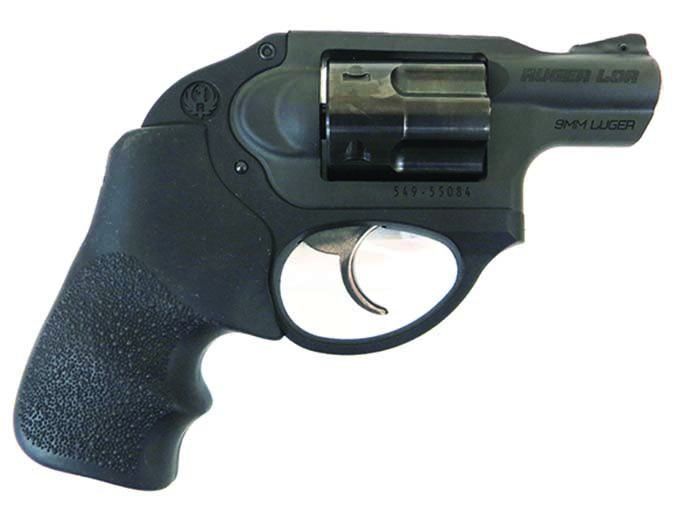
The LCR has a buttery-smooth trigger, and the grip design stands out from traditional snub-nose revolvers. Plus, it is lightweight.
| ACTION | Double action only revolver |
| OVERALL LENGTH | 6.5 in. |
| BARREL LENGTH | 1.875 in. |
| SIGHT RADIUS | 3.5 in. |
| OVERALL HEIGHT | 4.5 in. |
| MAX WIDTH | 1.3 in. |
| WEIGHT UNLOADED | 17.2 oz. |
| WEIGHT LOADED | 19.2 oz. |
| CYLINDER GAP | 0.007 in. |
| CAPACITY | 5 |
| FRAME FINISH | Matte black |
| BARREL/CYLINDER FINISH | Matte black |
| FRAME FRONT STRAP HEIGHT | 1.7 in. |
| FRAME BACK STRAP HEIGHT | 3 in. |
| GRIP | Hogue Tamer Monogrip |
| GRIP THICKNESS (max) | 1.2 in. |
| GRIP CIRCUMFERENCE (max) | 5.2 in. |
| FRONT SIGHT | Ramped blade |
| REAR SIGHT | Fixed groove |
| TRIGGER PULL WEIGHT | 10.5 lbs. |
| SAFETY | Transfer bar |
| WARRANTY | None written |
| TELEPHONE | (928) 541-8892 |
| WEBSITE | Ruger.com |
| MADE IN | USA |
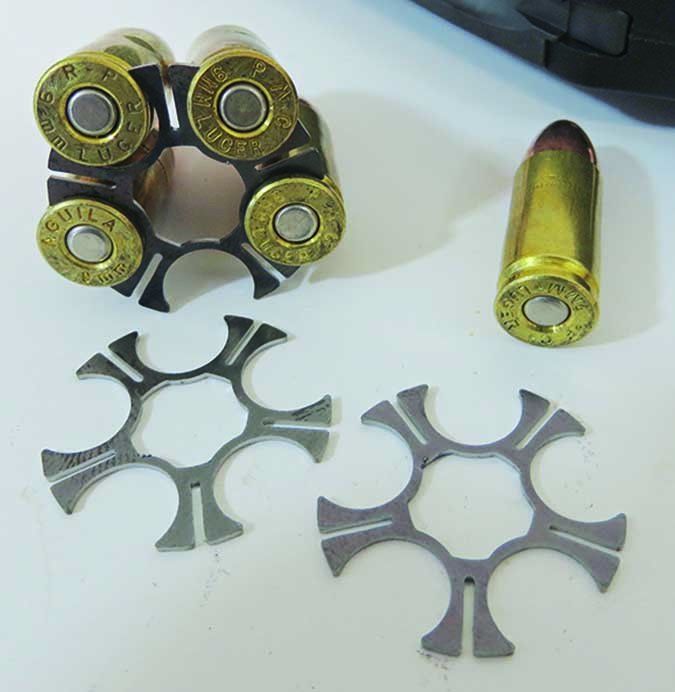
We calculated an average price of $532 for the Ruger LCR Model 5456 9mm Luger offered by five retailers through the Gallery of Guns app on the Ruger website. The LCR (Light Compact Revolver) is a different breed of snubnose using polymer, aluminum, and steel construction. A polymer fire-control housing is the grip and trigger guard portion of the revolver, while the frame assembly is aluminum, with a stainless-steel barrel sleeve in the frame. The cylinder is stainless steel and is traditionally fluted, unlike the radically fluted cylinder of the LCR 38 Special +P model. The Ruger was five ounces lighter than the Taurus, which is significant especially for a daily carry gun, but 3.7 ounces heavier than the LCR 38 Special model. It came with a soft case and cable lock. The LCR also uses a transfer bar safety system that enables the hammer to hit the firing pin only when the trigger is pulled all the way to the rear. So it is safe to carry fully loaded.
The matte finish was well executed, and we anticipate the polymer/steel portions to wear similar to a polymer/steel semi-auto. The trigger was smooth and felt much lighter than 10.5 pounds due to the friction-reducing cam-fire system. The trigger pull was also smooth, without stacking effect — noticeably better than the Taurus. The cylinder latch on the LCR is squeezed rather than pushed forward like on the Taurus or an S&W revolver. Manipulating latches of both revolvers was solid and precise. The end of the ejector rod on the Ruger LCR 9mm engages a pin in the shroud, locking up the front and via the ejector in the rear. Lock up was tight, and there was little play side to side or front to rear. Both revolvers locked up tight.
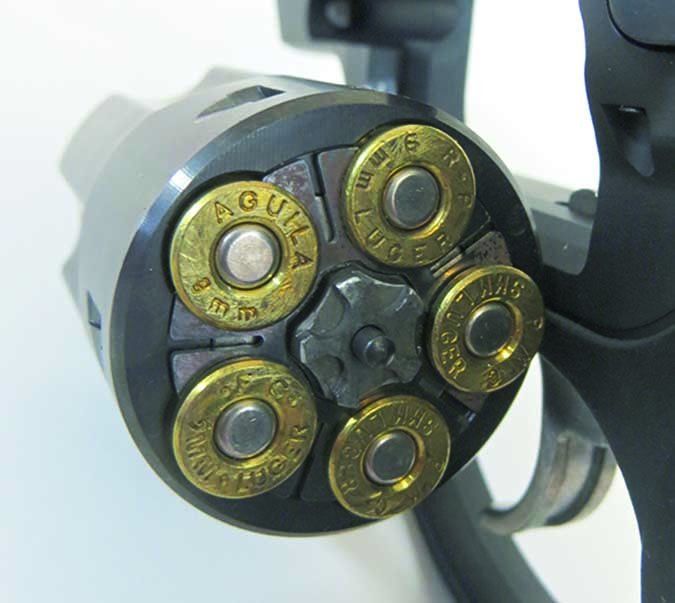
The sights were similar to those on the Taurus, except the ramped front-sight blade was pinned in place and replaceable or can be modified for a certain load. It also has a white strip on it so it is easier to acquire. The rear sight is a groove along the top strap that seamlessly blends into the arched portion of the frame covering the hammer. In our view, the LCR had more user-friendly sights and were a plus.
The Hogue Tamer grip had a pebbled texture on the sides, palm swells for both left- and right-hand shooters, and finger grooves. Where the web of the shooter’s hand contacts the grip is embellished with the Ruger logo. We also found a section of squishy blue rubber on the inside of the grip for absorbing more recoil. The grip felt good in hand, but was slightly larger than the 905 grip, something our testers thought would make the LCR print or hinder a draw from a pants pocket holster, depending on the size of your pocket. The rubber-to-metal fit of the grips of both guns was excellent. At the range, we found the LCR to be noticeably lighter than the 905. It also allowed a higher grip on the revolver, which means placing the center line of the bore closer to the shooter’s hand, reducing felt recoil. Indeed, we thought the LCR shot softer and produced less muzzle flip, particularly in rapid fire.
Our Team Said: The more time we spent with the LCR 9mm, the more we came to appreciate the smooth trigger and grip design, which makes this non-traditional revolver easy to shoot and manipulate.
Safariland 6378-53-411 ALS, $56
GUN TESTS GRADE: A (BEST IN CLASS ACCESSORY)
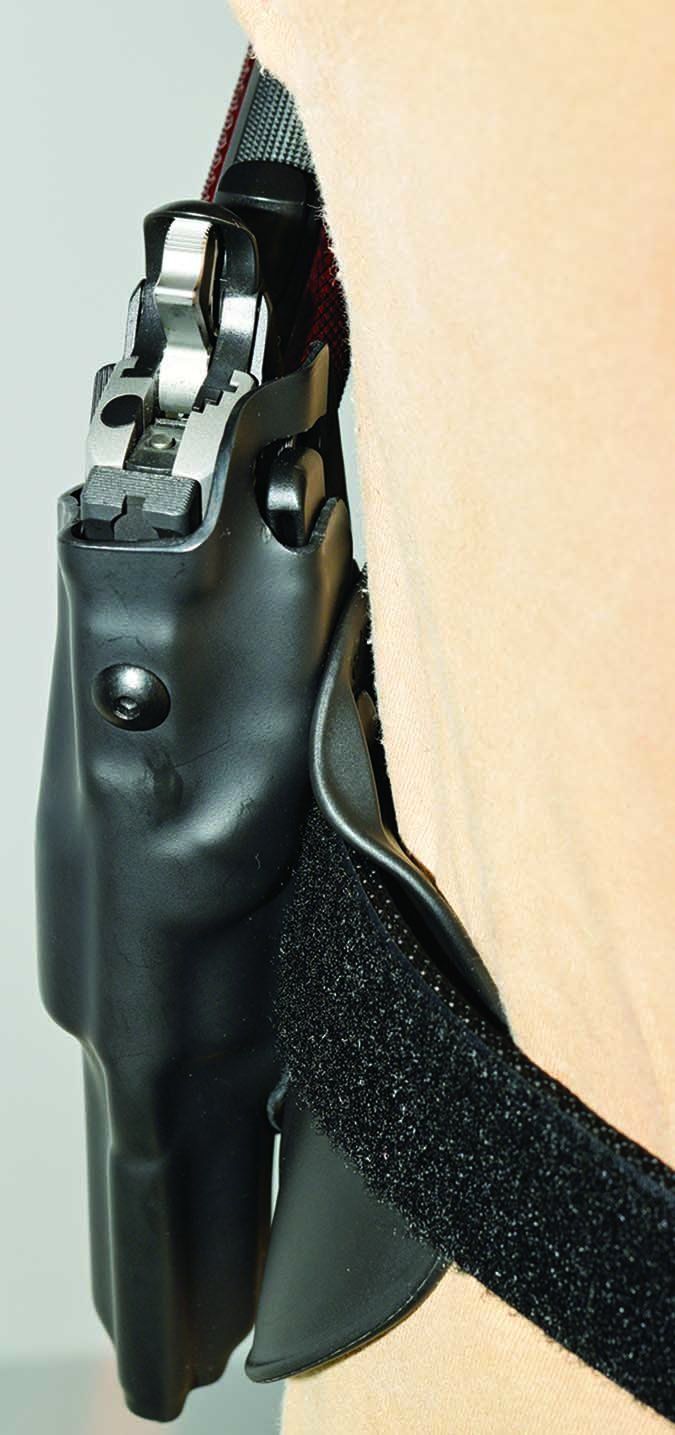
The interior of the Safariland ALS holster was lined with waterproof velour. Belt loops were supplied, but the paddle offered excellent comfort and support. Connection to the belt was so strong, it was tough to remove when gearing down for the night. The Safariland ALS holster nearly covered the pistol to reduce access and protect the gun from damage.
We noted that handgun retention for those who practice open carry is a prime consideration. Civilians, in particular, who plan to openly carry their firearms — such as our Texas readers were able to do for the first time on January 1, 2016 — must now be concerned with the safety considerations of out-in-the-open carry. We recognize that some legal gun owners will want to open carry, so the gun owner must maintain control of a carry firearm while still having fast access to it.
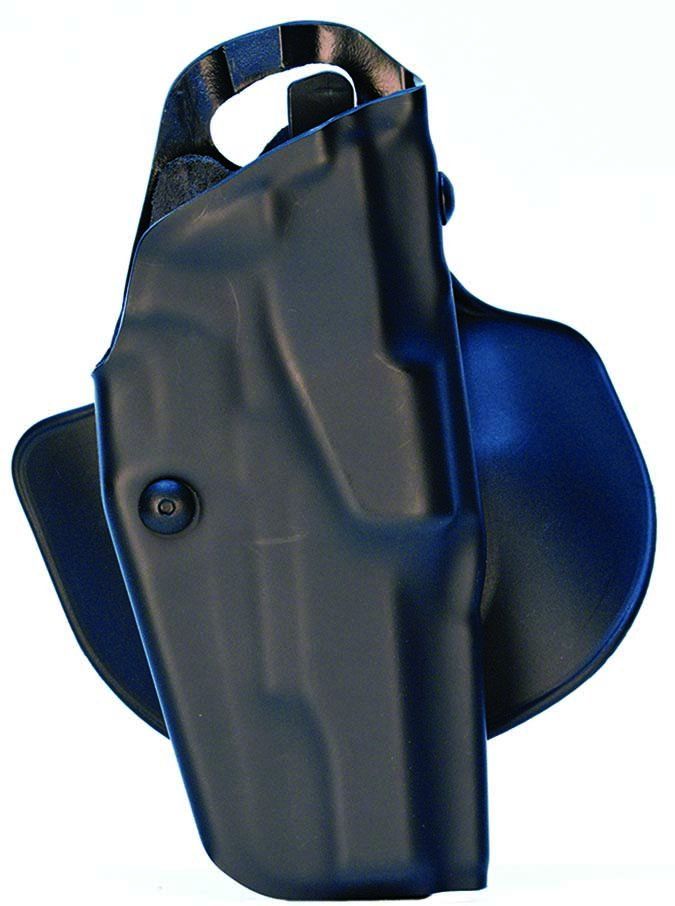
We challenged retention using two types of grips, “educated” and “freestyle.” The educated grip describes how an instructor might handle the gun, with the trigger finger held straight alongside the frame with three fingers wrapped below the trigger guard, thumb hugging the opposite side of the pistol. The freestyle grip started with all four fingers beneath the trigger guard and thumb wrapped around the other side. We also tried grabbing the gun with the left hand from a right-hand-side-mounted holster.
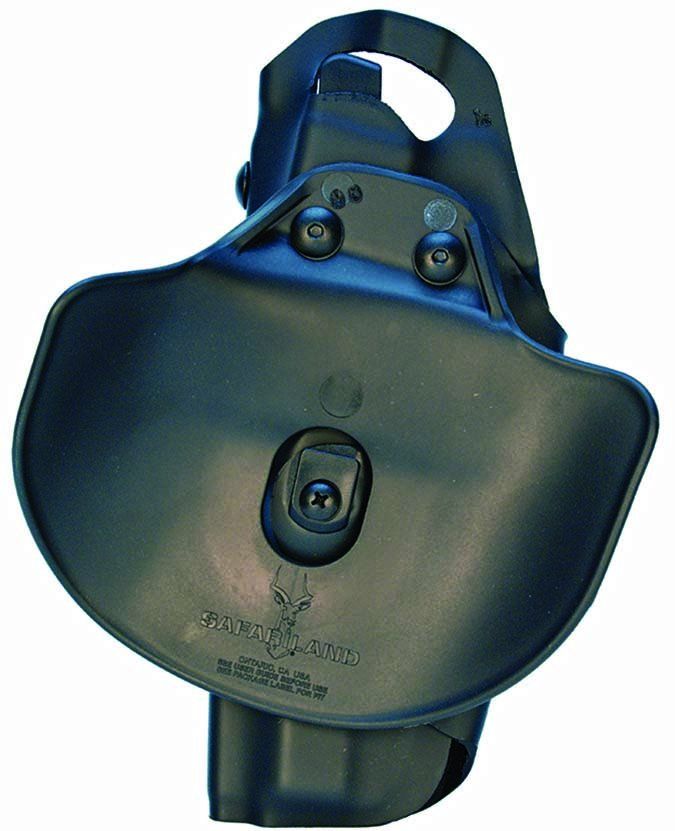
The Safariland 6378-53-411 ALS, $56, was fashioned from a synthetic laminate similar in look and feel to polymer. This moderately concealable holster was lined with suede and arrived with a paddle in place that locked securely onto the pants below the belt line. We found this unit difficult to remove even when not wearing a belt. The paddle was large and form fitting, spreading the weight of our Springfield Armory 1911A1 pistol with 5-inch barrel evenly and comfortably. A belt-loop panel and hardware were also provided to accommodate 1.5-inch-wide to 1.75-inch-wide belts. Belt retention in either case was without failure. The body of the holster was a perfect fit, covering all but the handle, including the upgraded Heinie Straight 8 sights. The right-side safety paddle was exposed, however, and could be deactivated. A pistol with a left-side-only thumb safety would be that much more secure. The thumb-drive release for the locking mechanism was well hidden along the inside of the holster below its top line, approximately where we would stage our thumb to be ready to interact with the safety. But the thumb safety was not accessible until the gun had been raised from the holster about 1.5 inches.
Our Team Said: We found only a limited amount of angles from which the gun could be drawn — a good thing. Held in the Safariland 6378-53-411 holster, our gun was extremely well protected from damage that could result from rolling around on the ground during a fight for the pistol. Thanks to the ALS, perhaps the most effective system found in our tests, and a solid belt mount, there’s a good chance the gun may well stay in place long enough for a ground fight to conclude and the user get enough working space to safely draw the pistol.


























who and the hell change the way you look up guns ratting . I tried to look up springfield 40 s&w mod 2 or any pistol they are all mixed up. I beat you loose a lot of customer like me. I even call the lady at your office she could not tell me how to find what I was looking for. gs
Long time customers like me enjoy the old way to look up reviews on specific weapons. Please update the new webpage to offer the previous A to Z manufacturing search. Thanks
I am a long time “Gun-Test’ fan, but I will admit to seriously missing the old style review list…the simplicity of A-Z was a habit that I do miss. I do hope that you, Todd, and your staff, understand how much you are appreciated for all the good work that you do. This site is ‘must reading’ for anyone interested in the shooting sports…..you are the ‘Best in class’!